
- Sailboat Hardware

Sailboat Winches
Our sailboat winches selection offers the best options available in the market to help you pull the halyards, sheets or any other loaded line on your sailboat, regardless if it is racing, club/racing or cruising.
Our sailing winch collection includes classic bronze Harken winches and modern Performa models, which feature an exceptional grip and avoid overrides. Our Antal, Creation, and Lewmar winches also offer superior performance at a great price. Evo winches feature a very installation-friendly configuration as well as a simple interior. Andersen winches offer a bulletproof stainless steel construction that exceeds the standard durability of any other drum material. They’re ideal for liveaboards and offshore passage makers sailboats.
Shop our sailboat winches and sailboat winch parts now!

Forespar MW-6 Marelon Winch

Selden Winch Pad 140mm

Lewmar 50 Evo Feeder Arm Spare
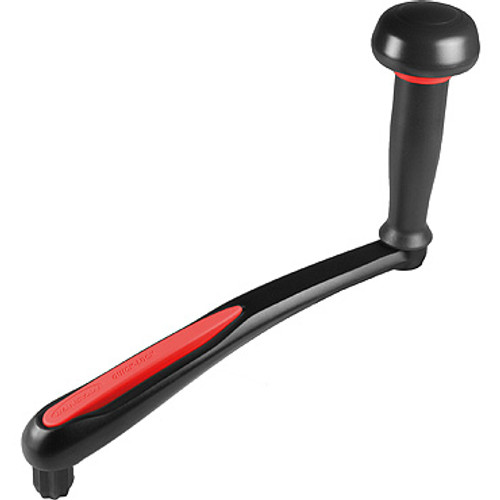
Ronstan Winch Handle QuickLock Alloy, 254mm (10"), Palm Grip
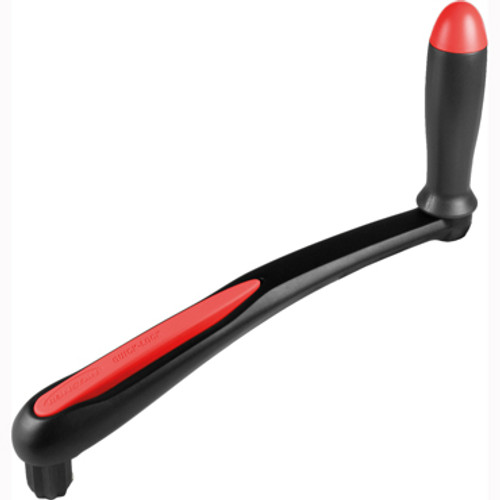
Ronstan Winch Handle QuickLock Alloy, 254mm (10"), Single Grip
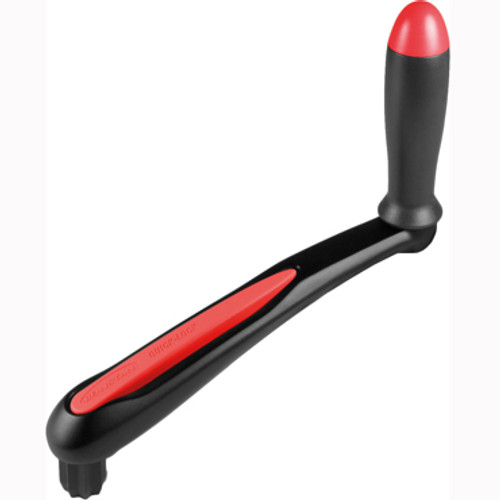
Ronstan Winch Handle QuickLock Alloy, 200mm (8"), Single Grip
Selden r52 reversible winch.

Harken Wincha Handle Adapter for SnubbAir 1300 Winch

Harken Snubb AirLow Profile Winch (does not include winch handle adapter)
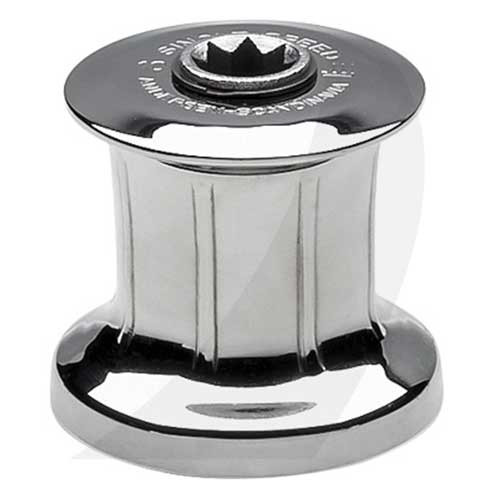
Andersen Winch 18 Classic, Two Speed
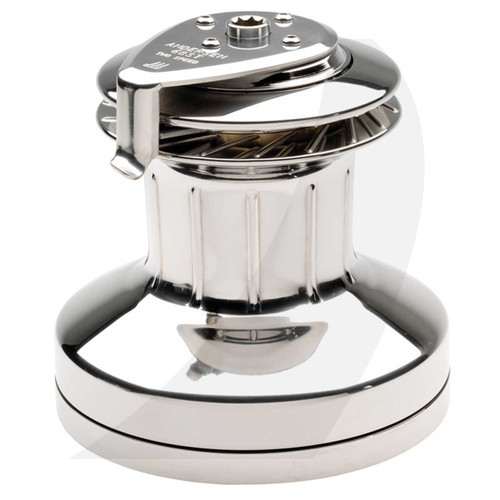
Andersen 62ST Winch FS

Andersen 58ST Winch FS

Andersen 52ST Winch FS

Andersen 46ST Winch FS
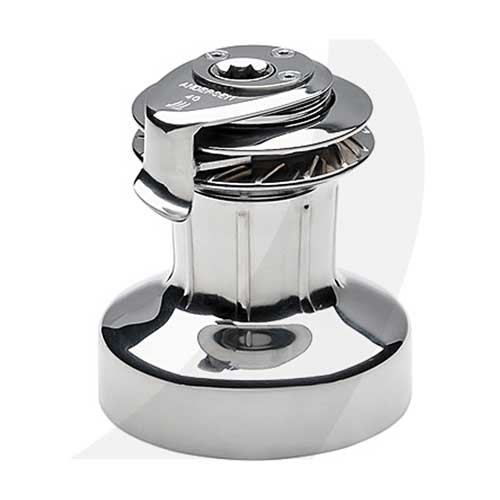
Andersen 40ST Winch FS

Andersen 28ST Winch FS

Andersen 18ST Winch FS, Single Speed
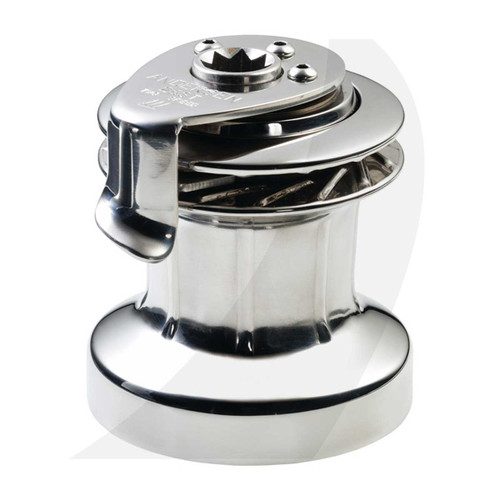
Andersen 12ST Winch FS, Single Speed
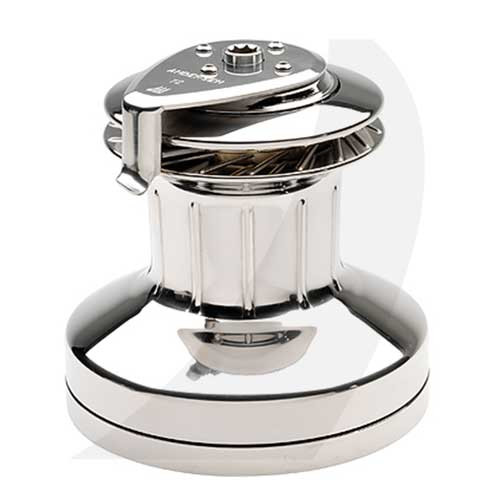
Andersen 72ST Winch FS
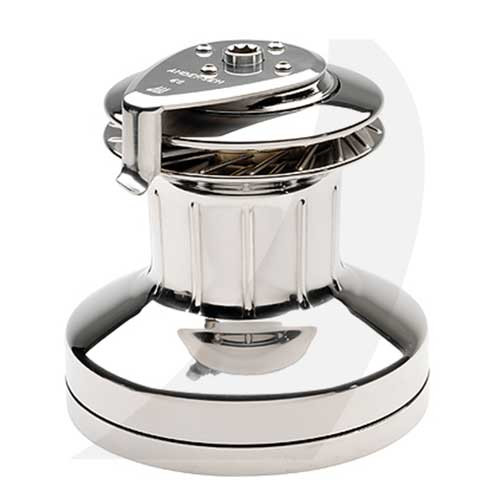
Andersen 68ST Winch FS
- TECHNICAL SUPPORT
MANUAL & ELECTRIC WINCHES
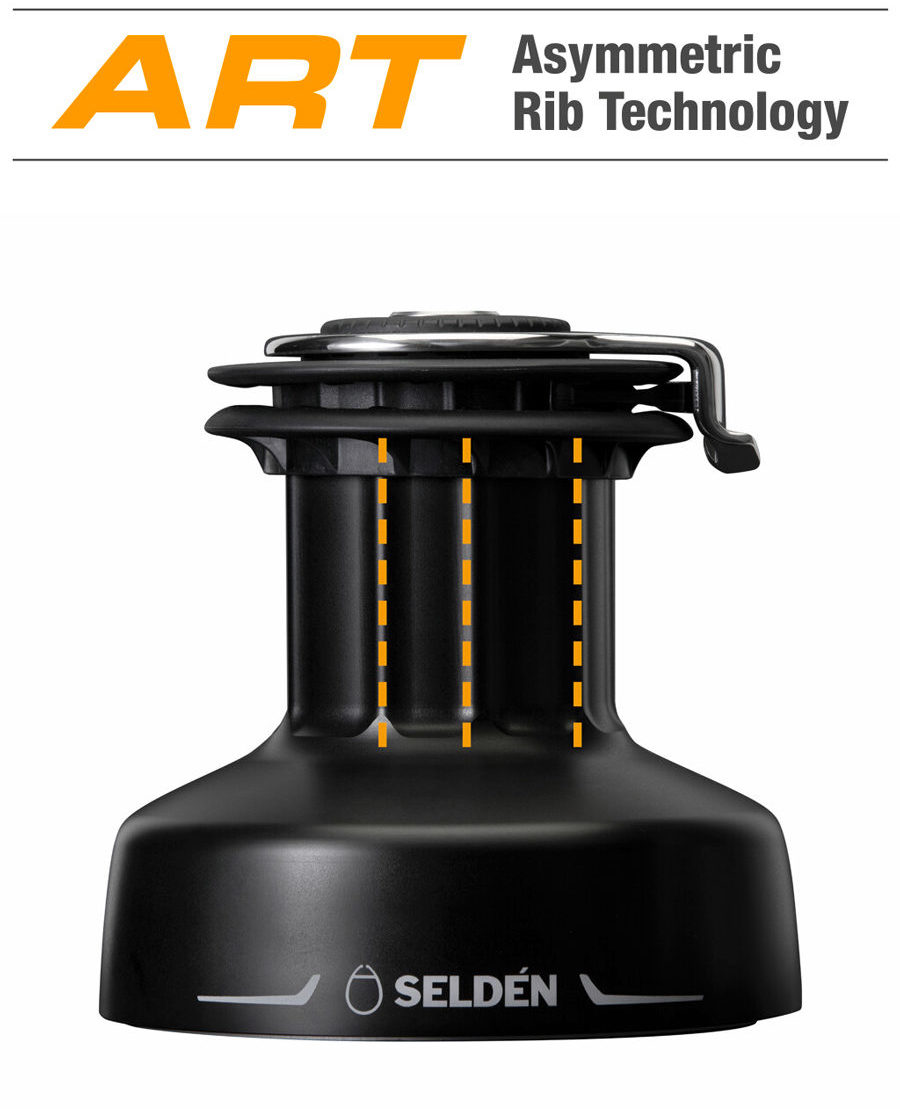
Asymmetric Rib Technology
The drums we are using for our new manual and electric winches are forged and machined hard anodised aluminium with vertical ribs located in an asymmetric pattern. Any line under load will become slightly dented where it rests over a rib and if all ribs were located symmetrically, all dents would simultaneously jump to the next rib when releasing the line. And the next one, and the next one… Ribs placed asymmetrical provide a good grip and a harmonious release. We call it ART. You will call it magic.
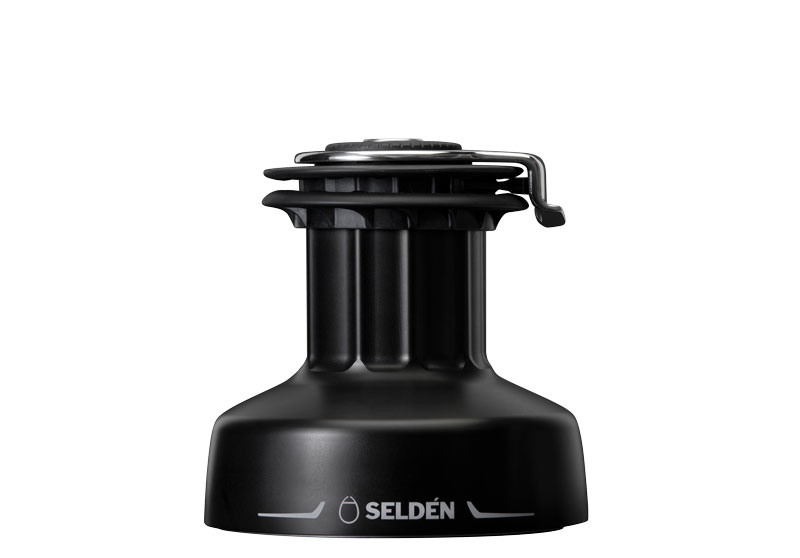
S-SERIES 2-speed self-tailing winches
S30, S40, S46, S52, S60, S66
A new work horse, already praised by both racing and cruising sailors after two years of sea trials. The interaction between the ART drum and the self-tailer strikes the perfect balance of grip and function.
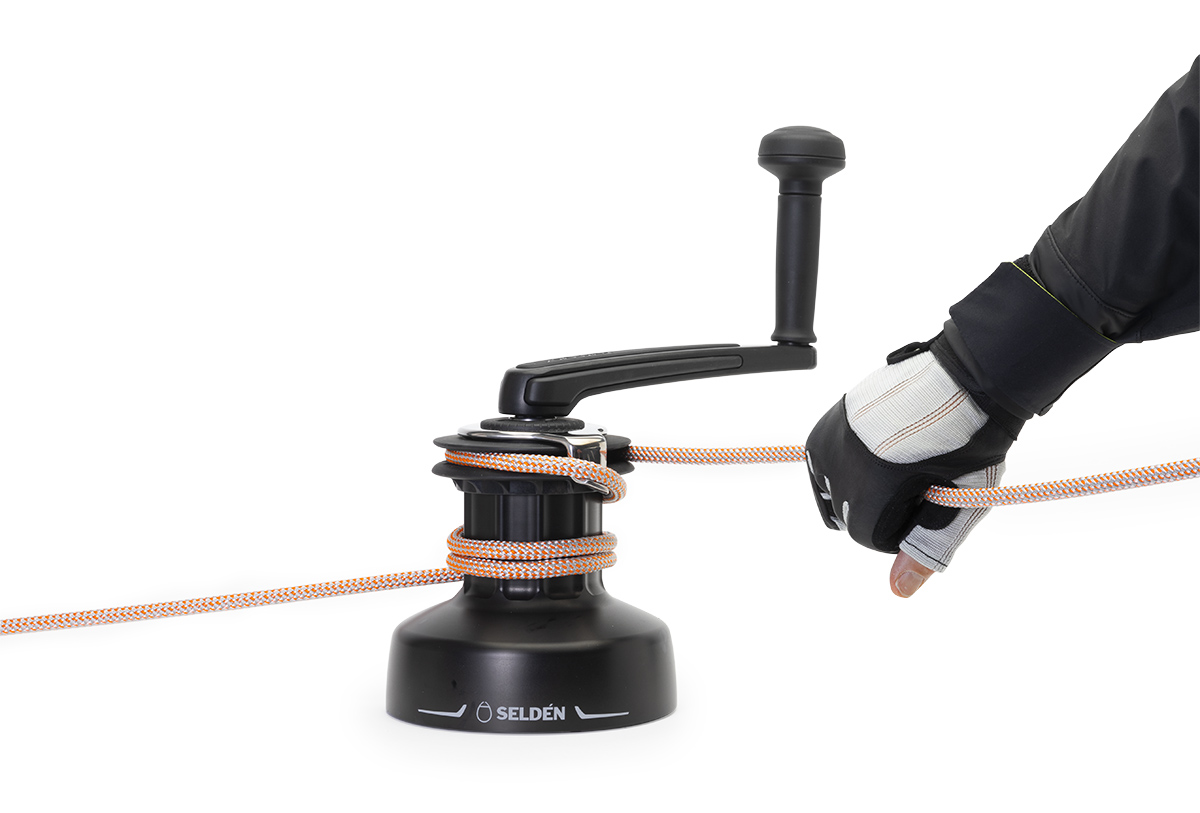
Tacking and gybing made easy
The S-series simplifies the manoeuvre of tacking and makes the handling of a highly loaded sheet safer and quicker. The grip on the winch drum combined with a unique self-tailer enables the trimmer to pull the slack out of the sheet with the line sitting in the self-tailer and with the winch handle in position. A great advantage for the racing sailor who can pre-load the sheet into the self-tailer of the windward winch prior to tacking and then sheet home and set the trim of the jib instantly on the new tack. Simply pull in the slack and turn the handle a turn or two to get full tension. The cruising sailor will appreciate simpler and safer manoeuvres by not having to hand hold a tensioned sheet whilst trying to load it into the self-tailer and searching around for the winch handle.
Electric upgrades for S-winches
If you wish to upgrade your S-winch to electric drive, just install the motor pack and fit your existing winch on top of it.
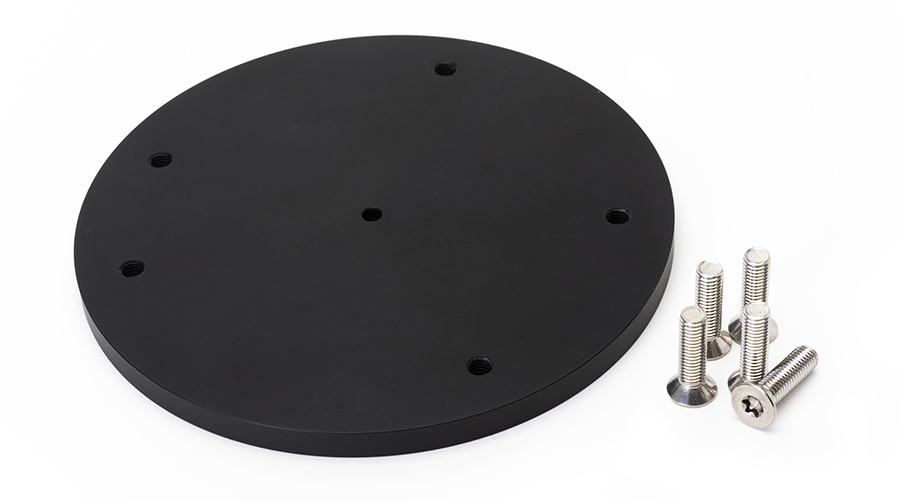
Replace your old winches without drilling new holes in your boat
Optional adaptor plates with threaded and anodised holes for the Seldén S-winch are available. Use your old winch as a template to mark positions of your existing holes, drill, countersink the holes, apply grease to the bolts and fit the adaptor plate to deck. The Seldén winch fits on top with fasteners included in the kit. The plate is hard anodised black aluminium of the same diameter as the S-winch you are installing.
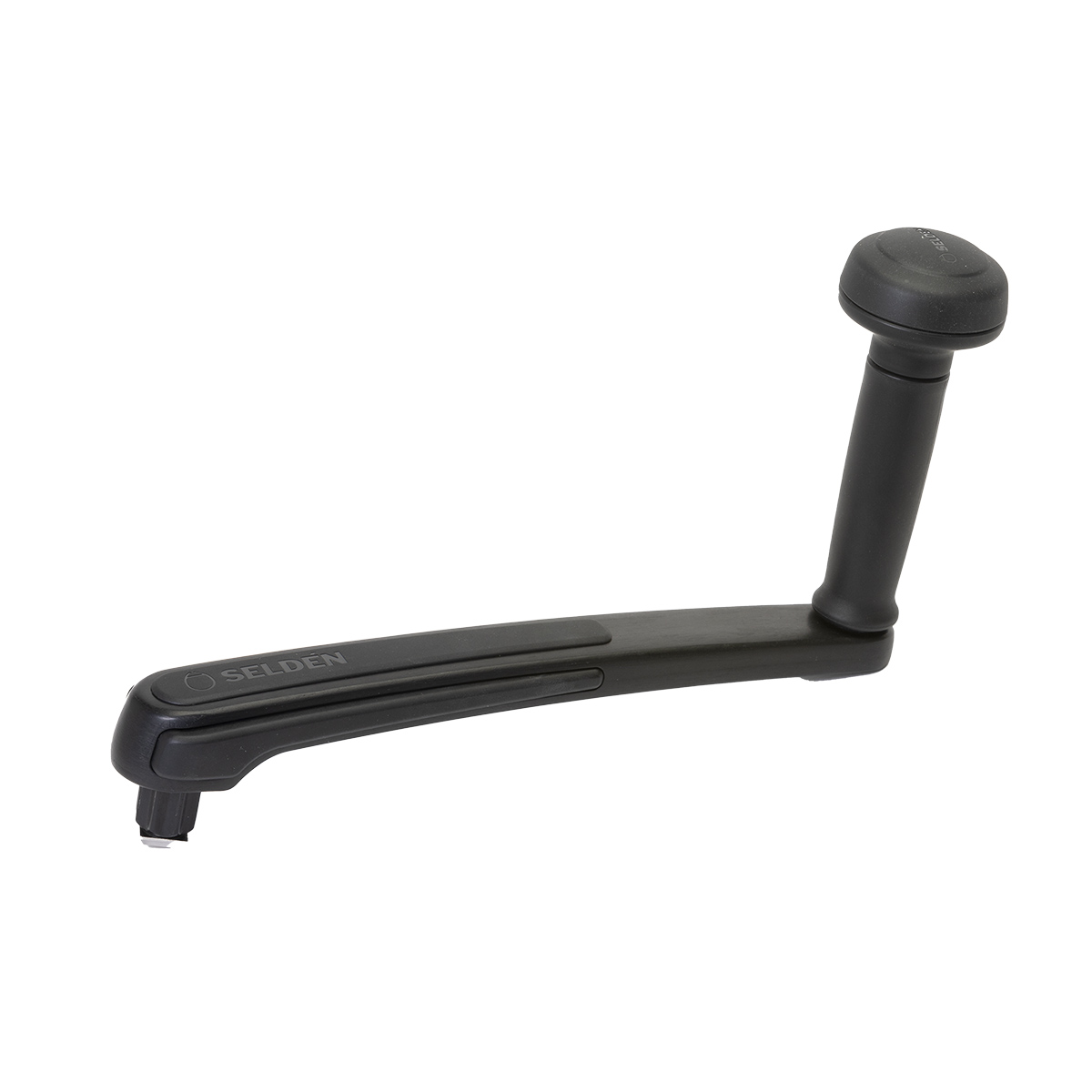
Seldén Race GRIP
The patented Race GRIP handle is designed with the most logical location of the locking mechanism – on the sides! Long release levers on the sides of the handle are pushed in as you grab the handle. This will turn the locking plate so that the handle can be engaged and disengaged rapidly.
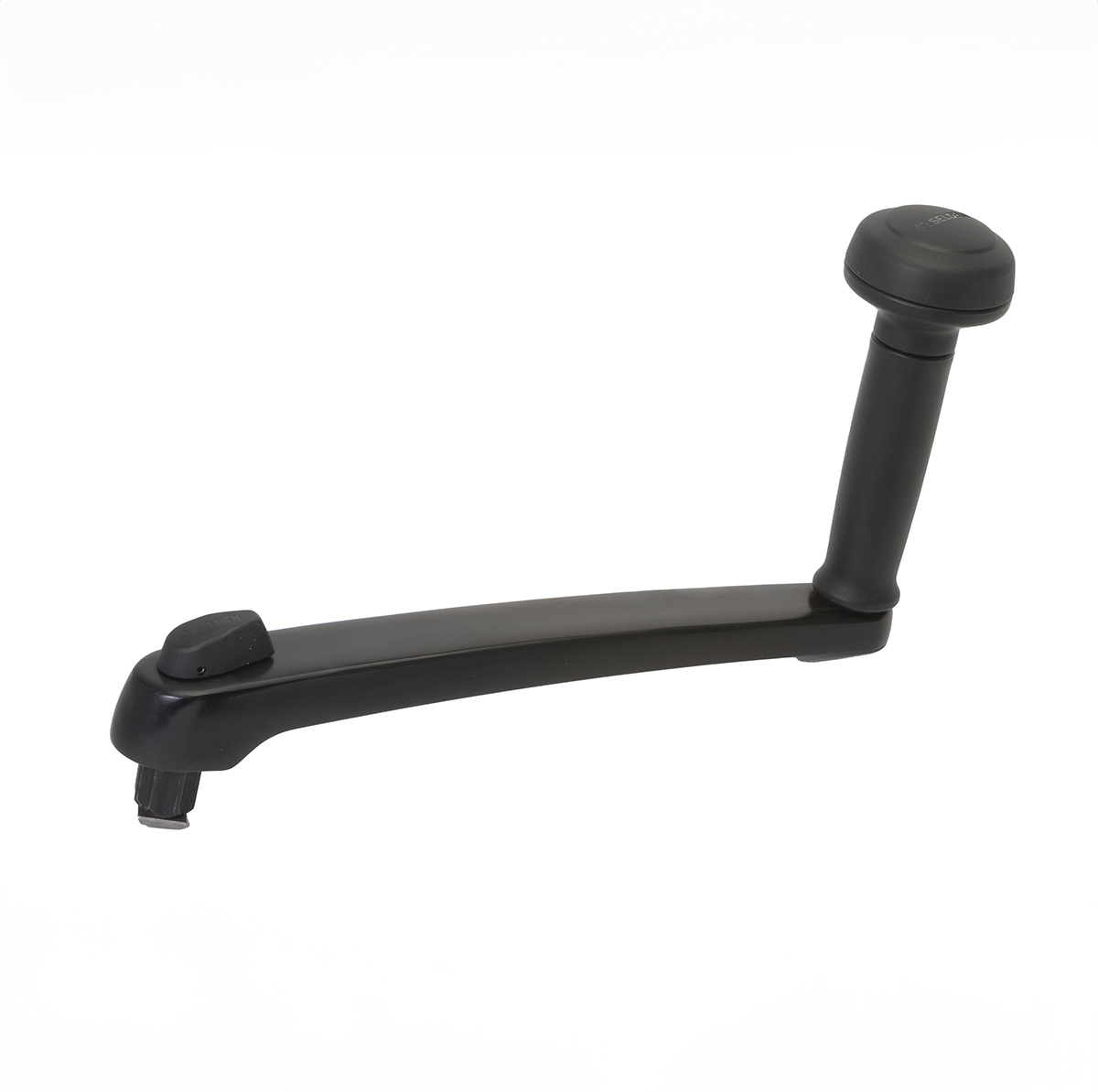
The standard handles are featuring a thumb-switch and are available in lengths of 8 or 10 inches. Rigid crank arm and a low friction knob get the job done efficiently.
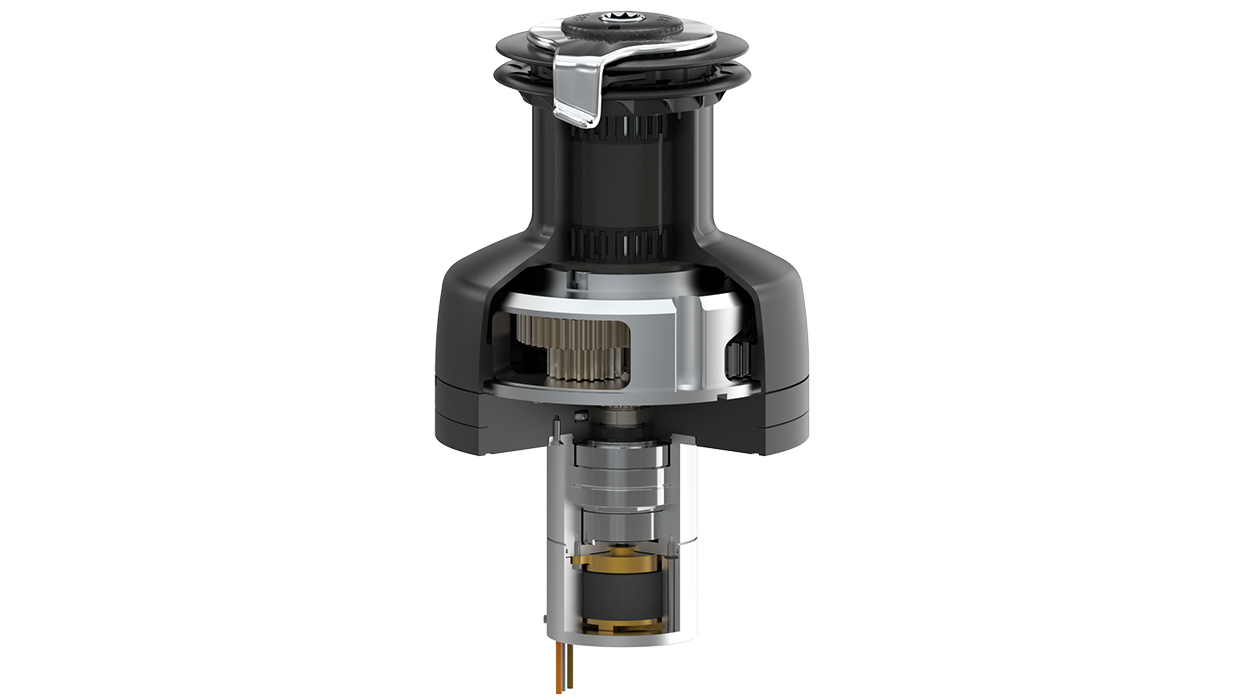
E-SERIES Electric winches
E40, E46, E52, E60, E66
Operates with three velocities for precise and efficient sail handling. The high-speed mode is an electric overdrive and perfect when pulling the slack of for instance a long and unloaded genoa or Code 0 sheet. The Electric winches are manual 2-speed winches fitted to a SEL-Bus driven motor pack allowing for a third high-speed velocity. The back-up solution, in case you run out of power, is to put a winch handle in the socket and grind. This concept also allows you to upgrade your manual winches to electric at a later stage. The motor packs are powered up by Seldén’s Power Supply Unit converting 12/24V to 42V which makes for an efficient and compact design of the motor assembly and thin 6 mm 2 power cables.

- Series-S & Series-E winches
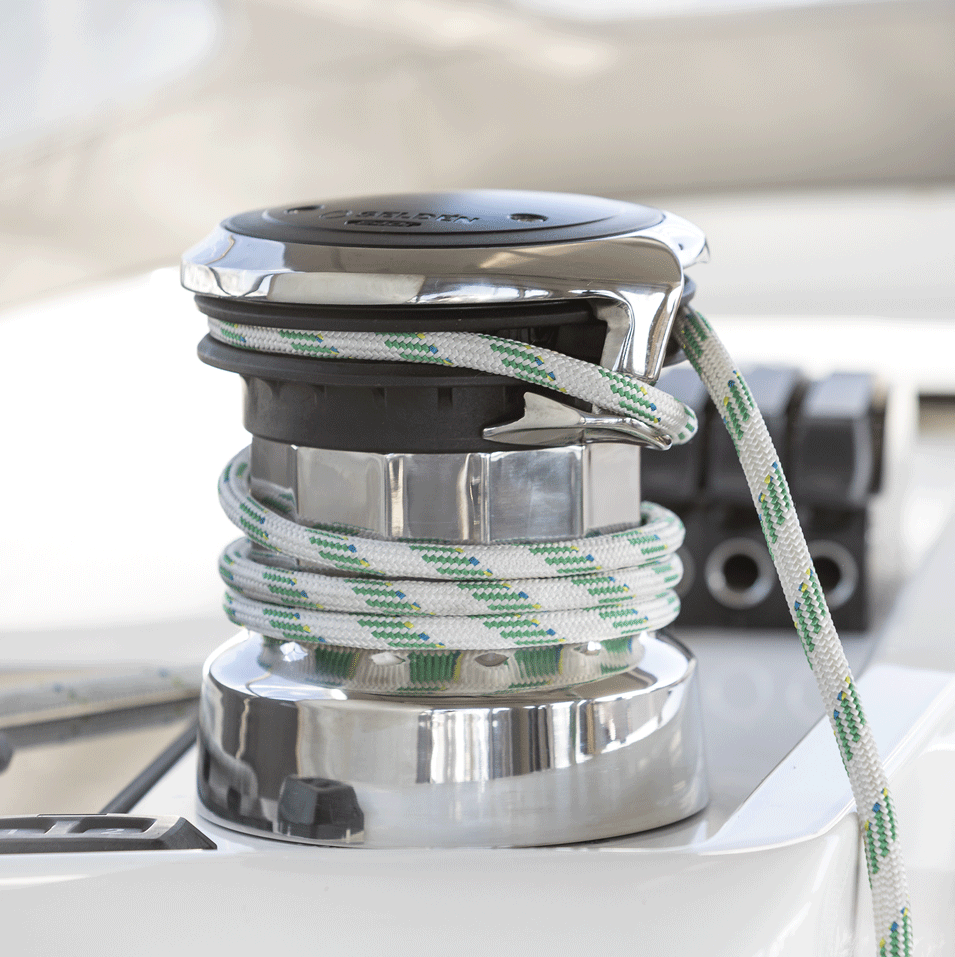
E40i – THE EASILY PLACED ELECTRIC WINCH
The coach roof is the normal place for a winch that operates halyards, reef lines, outhaul and control lines.
The E40i winch is built up around an electric motor which is totally integrated in the drum. Only three thin cables are protruding to lead through the coach roof or the deck, no large cutouts and no external motor or gearbox.
This makes for uncompromised headroom down below.
Hoisting your main will no longer be a struggle. Self-tailing function and 3-speed operation makes E40i ideal for any line where you need the combination of speed and fine-tuning.
A PERFECT MATCH FOR YOUR FURLING MAST
An interplay between E40i and Seldén’s electric furling mast forms the ingenious Synchronized Main Furling system (SMF) developed by Seldén. Press one button and E40i will tension the outhaul simultaneously as the mast motor unfurls the sail from the mast.
STAINLESS STEEL OR ALUMINIUM?
Choose between the shiny stainless version of E40i or go for the black in hard anodized machined aluminium. The looks may differ but the function is the same.
HOW IT’S CONNECTED
- E40i – Electric winch
- Upgrade your furling mast to electric drive
- Manual for E40i
- Power supply and SEL-Bus system
- Questions & answers
- SELBUS Order guide
- SMF retrofit kit type RB
- General conditions of sale >
- Product recalls >

Cookies | Legal and Privacy | Copyright © 2024
This site uses cookies
Read more about cookies .
Rigging - Turnbuckles , Toggles , Wire & Rod Components, Norseman Cones & Fittings.
Furling Systems - Systems and replacement parts from a variety of Manufacturers.
Traveller Systems - Adjustable Track Systems for Mainsheet and other applications.
Sailboat Hardware - Rope Clutches, Blocks, Track & Fittings, Winches, etc.
Custom Parts - Custom items, or those out of production or otherwise unavailable.
Consultation - Special projects, research, or information not detailed on-site.
Copyright 1996 - 2024, Rig-Rite, Inc. Disclaimer Web Site maintained by The WATER Group
- Hiking Shoes
- Hiking Boots
- Hiking Sandals
- Trail Runners
- Base layers
- Hiking Shirts
- Fleece Jackets
- Softshell Jackets
- Rain jackets
- Down Jackets
- Hiking Pants
- Hiking Shorts
- Base Layers
- Rain Jackets
- Hiking Bras
- Baby Carriers
- Cookware Sets
- Water Filters
- Water Purifiers
- Sleeping Bags
- Sleeping Pads
- Hiking Poles
- GPS Devices
- Solar Chargers
- Dive Regulators
- Dive Computers
- Dive Watches
- Dive Wetsuits
- Dive Gloves
- Dive Lights
- Dive Knives
- Spearfishing Wetsuits
- Spearfishing Masks
- Spearfishing Fins
- Spearfishing Watches
- Freediving Wetsuits
- Freediving Masks
- Freediving Fins
- Freediving Watches
- Sit On Top Kayaks
- Inflatable Kayaks
- Fishing Kayaks
- Tandem Kayaks
- Touring Kayaks
- Kayak Paddles
- Kayak Seats
- Kayak Roof Racks
- Kayak Carts
- Stand Up Paddle Boards
- Touring SUPs
- Inflatable SUPs
- Fishing SUPs
- SUPs For Yoga
- SUPs For Surfing
- SUP Paddles
- Climbing Boots
- Belay Devices
- Climbing Shoes
- Women's Climbing Shoes
- Bouldering Shoes
- Approach Shoes
- Climbing Pants
- Bouldering Pants
- Mountain Bikes for Men
- Mountain Bikes for Women
- MTB Handlebars
- Bike Saddles
- Bike Computers
- Bike Lights
- MTB Jackets
- Bike Helmets
- Bike Packing Gear
- Fat Biking Gear
- Ski Bindings
- Ski Helmets
- Ski Goggles
- Ski Jackets
- Snowboarding Bindings
- Snowboarding Boots
- Snowboard Helmets
- Snowboard Goggles
- Snowboard Pants
- Snowboard Jackets
- Snowshoe Poles
- Avalanche Beacons
- Avalanche Probes
- Avalanche Shovels
- Ski Backpacks
- Surfboards For Beginners
- Surfboards For Kids
- Surfboard For Small Waves
- Soft Top Surfboards
- Foam Surfboards
- Body Boards
- Boogie Boards
- Kiteboarding Kites
- Kitesurfing Boards
- Kiteboarding Harnesses
- Surfing Wetsuits
- Men's Rash Guards
- Women's Rash Guards
- Board Leashes
- DLSR Travel Cameras
- Mirrorles Travel Cameras
- Point and Shoot Travel Cameras
- Fuji Travel Lenses
- Nikon Travel Lenses
- Tripods for Travel
- DLSR Landscape Cameras
- Mirrorles Landscape Cameras
- Point and Shoot Landscape Cameras
- Fuji Landscape Lenses
- Nikon Landcape Lenses
- Canon Landcape Lenses
- Tripods for Landscape Photo
- Wildlife Cameras
- Wildlife Lenses
- Wildlife Tripods
- Wildlife Monopods
- Birdlife Cameras
- Birdlife Lenses
- Surfboards For Small Waves
Best Sailboat Winches of 2024
Boats are extraordinary vessels that allow us to truly connect to nature. But they live in harsh environments and many of their components have to take enormous loads just to sail. Winches are one of the key parts of a boat that take the strain so it’s important that you choose the best sailboat winches for you.
Just by closing your eyes it’s easy to feel the wind on your face as your sailboat begins to heel over. As the sails catch the wind and the boat accelerates forward, it’s time to ease the sheets a little. This is where the winch takes over. Weak, undersized or seized winches can spell disaster. If yours are getting old, it could well be time to replace them.
We’ll help you sort out what’s good, what’s not, and what the difference is. Keep reading to find your perfect sailboat winches.
For more of our top sailing gear recommendations, check out the Best Sailboat Anchors .
QUICK ANSWER – THE BEST SAILBOAT WINCHES
- Lewmar Two-Speed
- Harken Radial
- Andersen Two-Speed
- Harken Two-Speed
- Lewmar Evolution Electric
- Antal Two-Speed
- Lewmar Two-Speed Non-Self-Tailing
- Andersen One-Speed
- Lewmar One-Speed
- Harken Single Speed

SAILBOAT WINCH REVIEWS
Lewmar two-speed.
Check out the latest price on: Amazon
BEST FOR: Lightweight primary winches
SELF-TAILING: Yes
MATERIAL: Anodized aluminum
PROS: Lightweight for those who want to keep weight down, sleek in black, long warranty, very simple to take apart and put back together for maintenance
CONS: Not as hard-wearing as bronze, black winch gets very hot in the tropics
HARKEN RADIAL
BEST FOR: Heavily used primary winches
MATERIAL: Chromed bronze
PROS: Very durable and long-lasting, easy to maintain and take apart, upgrade/convert to electric with ease, grippy surface lessens friction
CONS: Quite pricey, short warranty, much heavier than the Lewmar Two-Speed
ANDERSEN TWO-SPEED
Check out the latest price on:
BEST FOR: Primary winches looking to impress
MATERIAL: Stainless Steel
PROS: Extremely beautiful to look at, lightweight, durable
CONS: You’re paying extra for the impressive full stainless steel look, not as durable as bronze
HARKEN TWO-SPEED
BEST FOR: Primary winches using different size lines
PROS: Spring-loaded self-tailing jaw secures different size ropes, shaped drum holds rope without friction, very simple to maintain and put back together, easy to mount, lightweight, convertible to electric
CONS: Very expensive for added extras that may not be necessary
LEWMAR EVOLUTION ELECTRIC
BEST FOR: Older sailors wanting easy-to-use primary winches
PROS: Easy to install below-deck motor, choice of finishes in alloy black or chrome, long warranty
CONS: Quite heavy including the motor, pricey if you don’t absolutely need electric
ANTAL TWO-SPEED
BEST FOR: Hard-wearing primary winches
PROS: Very durable in chromed bronze, reasonably light for bronze, spring-loaded jaws to take different size ropes, easy to maintain
CONS: Paying extra for chromed look yet still lacks the wow factor of Andersen’s full stainless steel winches, short warranty
LEWMAR TWO-SPEED NON-SELF-TAILING
BEST FOR: On-mast or racing winches
SELF-TAILING: No
PROS: Bronze construction offers exceptional longevity and durability, grippy drum, two speed offers greater flexibility for use
CONS: A little pricey for non-self-tailing although great materials, short warranty
ANDERSEN ONE-SPEED
BEST FOR: Eye-catching racing and on-mast winches
PROS: Looks incredible, smooth drum allows rope to pass easily, easy adjust sheets while racing, aluminum and bronze plates inside for extra durability, great price
CONS: Short warranty, some sailors will prefer a grippy or shaped drum as opposed to smooth
LEWMAR ONE-SPEED
BEST FOR: Bargain on-mast or racing winches
PROS: Very affordable, good for older yachts with on-mast winches, excellent Lewmar construction
CONS: Not as hardwearing as Lewmar’s bronze version, short warranty
HARKEN SINGLE-SPEED
BEST FOR: Primary winches for smaller sail areas
PROS: Great price for a self-tailer, radial drum gives grip on rope with needing friction, very easy to maintain and put back together, spring-loaded jaws for holding different size ropes
CONS: One-speed is ideal for smaller sail areas but you may struggle with larger sails, lightweight but not as durable for primary winches as bronze
COMPARISON TABLE – THE BEST SAILBOAT WINCHES
How to choose the best sailboat winches, 1. how many winches do you need.
Well made winches can last for many decades but can need replacing for several reasons. Winch technology has moved on and you may want to replace non-self-tailing winches for self-tailing ones. Or your winches may simply be corroding or weakening through age.
It’s often easy to find out how many winches you need by simply counting the existing ones on your sailboat. Rarely used winches may be in much better condition than the same age highly used winches. This allows you to retain rarely used old winches and put the saved money into buying better quality new winches. While that liveaboard boat you hung out on may have had ten winches, chances are, a small yacht will only have two to seven.
Knowing how many winches you need allows you to stick to your budget more closely. You probably won’t need every winch to be the same either. With self-tailing winches ideal for cockpit primary winches, winches on the mast often don’t need to be self-tailing. Further savings can be made from understanding what type of winches you need.
2. DO YOU WANT SELF-TAILING WINCHES?
For short-handed sailors, self-tailing winches are all but essential. In fact, having primary self-tailing winches regardless of your crew size will make the cruising sailboat an easy place to be. Of course, if you have a really big yacht, you can use two-way radios to give winchman instructions!
On sailboats where some lines are lead back to the mast and not to the cockpit (i.e. many older sailboats), you don’t need self-tailing winches on the mast. Often you can just get away with a non-self-tailing winch and a cleat nearby.
Sheet winches should ideally be self-tailing while halyard winches can be non-self-tailing.
Winches give you leverage with which to pull in the sails but in particularly strong winds or racing conditions, extra leverage is required. Geared winches provide this extra leverage. With one to four gears, geared winches are also excellent for taking the load for hobby sailors, older sailors and even enthusiastic children!
For an ordinary cruising sailboat (even those who do a spot of club racing), you’ll be choosing between one-speed and two-speed geared and non-geared winches. Three- and four-speed winches are only used by powerful racing boats.
One-speed winches that aren’t geared are the cheapest type of winch and only suitable for small sailboats or as on-mast winches.Each turn of the winch handle equals one turn of the drum, making these unsuitable for large loads.
Geared one-speed winches offer greater mechanical leverage and the handle is ratcheted when turning in the opposite direction. This gives you more power for less movement when cranking up that sail to windward.
Two-speed winches allow the handle to travel in either direction at different speeds. This is great for fast winching with one speed and then switching winching direction for a lower speed as the sail comes in. Two-speed winches typically are geared in one direction and not in the other.
Geared two-speed winches are the same except they are geared in both directions. For the average cruising sailboat or daysailor, geared two-speed primary cockpit winches are the best option. This is especially true for single- or double-handed sailing.
4. MATERIAL
Winches come in different materials. The differences are primarily based on weight, quality, and price.
ANODIZED ALUMINUM
Super lightweight and affordable, anodized aluminum winches are a popular choice on sailboats.
CHROMED BRONZE
Bronze is extremely hardwearing, making it a good choice on sailboats. Bronze was the traditional material for winches but it looks outdated on modern yachts. Chromed bronze makes the most of the durable bronze but adds a modern look with a chrome outer layer. These are pricey but excellent winches.
STAINLESS STEEL
If you’re looking for the best and most durable winches, stainless steel is the way to go. It also looks great and it’s extremely strong. If you look after your stainless steel winches, you may never need to replace them.
Composite boat parts are increasing every year although many traditional sailors prefer metal. Composites are actually very strong, very durable and are impervious to corrosion. The main composite material used in winches (and seacocks) is Marelon. Expensive, but you’ll probably never need to replace them.
5. ELECTRIC WINCHES
Manual winches work by human strength combined with mechanical leverage. For small sailboats, the average sailor will be perfectly happy with manual winches. However, electric winches are becoming more popular and can certainly be of benefit.
Electric winches have a motor placed above-deck or below-deck. Using buttons, electric winches grind the rope for you and some will even release it for you as well.
The main downside of electric winches is their power consumption. As a sailor, you obviously don’t want to be forced to run your engine often just to charge the batteries for your winches! Always check your house battery capacity and work out how much power the winches will use on your typical sailing trips.
Electric winches also have the capacity to act as manual winches in combination with a standard winch handle. This is important because if your batteries or electrical system fails, it’s imperative that you are able to still operate your winches if you’re under sail.
CONVERSION OPTION
Some sailors want manual winches but would like to have the option to convert those winches to electric. Winches can last many decades and as sailors age, having the option of electric conversion can be reassuring.
Size is another important consideration and is based on boat size and sail area. You can often determine your winch size merely by your existing winches but the main providers also provide charts. Lewmar winch size chart is an excellent resource as is the Harken winch size guide .
For more of our top sailing gear recommendations, check out these popular buyer's guides:
Sailboat Anchors
Sailboat Winches
Sailing Shoes
Solar Panels for Sailboats
Bilge Pumps
× You are using an outdated browser. Please upgrade your browser to improve your experience.
We Ship Worldwide! | FREE SHIPPING! for US Continental orders over $99. Click for details.

Shopping Cart
Your cart is currently empty..
FREE SHIPPING! for US Continental orders over $99 click for details

Harken Winches
Lewmar Winches
Andersen Winches
Sailboat Winches

Powerful and high-quality sailboat winches are important for the types of high loads encountered on sheets, guys, halyards and other control lines. On larger boats, the ideal winch will help you reel in a line and increase tension, saving your arms for other tasks. Plain top sailboat winches will require you to tail the loose end to keep tension on your turns while operating the winch. Self-tailing winches free up the hand from the loose end of the rope and facilitating better handling of the winch and winch handle. Electrical winches are available as a solution to short-handed or overpowered sailing. Winches are sold based on material as well, whether you want the lightweight of an aluminum winch, an appealing chrome sailboat winch or if you are looking for the visual aesthetic of a stainless steel yacht winch. Technical assistance is provided to help you select the perfect primary genoa winches, secondary winches, halyard winches or specialty winches for racing or cruising.
Replacing old Sailboat Winches When replacing an old sailboat winch, the new winch doesn't need to have the same specifications as the old one. It is recommended to select a replacement winch that is similar in size and has at least the same power ratio as your old winch. Also, consider whether your old winch had sufficient power to bring your sails to full trim or hoist with a reasonable amount of effort. Many older boats used winches that are underspecified by today's standards and in many cases, it can be beneficial to upgrade a winch to a more powerful size instead of just replacing your boat's old winch. Another consideration to remember is that in many cases Meissner, Barient and Barlow winches did not use the same numbering scheme as modern Harken anderson and Lewmar winches. In the case of Harken anderson and Lewmar winch the number of a winch is prominently the power ratio of that winch. So for example an old Harken 44.2 winch had a power ratio of 44 and a Harken Radial 46.2 Self-tailing winch has a power ratio of 46.5.
MAURIPRO Sailing, your direct access to Sailboat Winches and all your other sailing and boating needs.
Copyright © 2024 MAURIPRO Sailing LLC.
Attainable Adventure Cruising
The Offshore Voyaging Reference Site
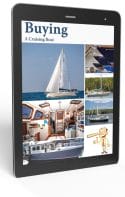
- Offshore Sailboat Winches, Selection and Positioning
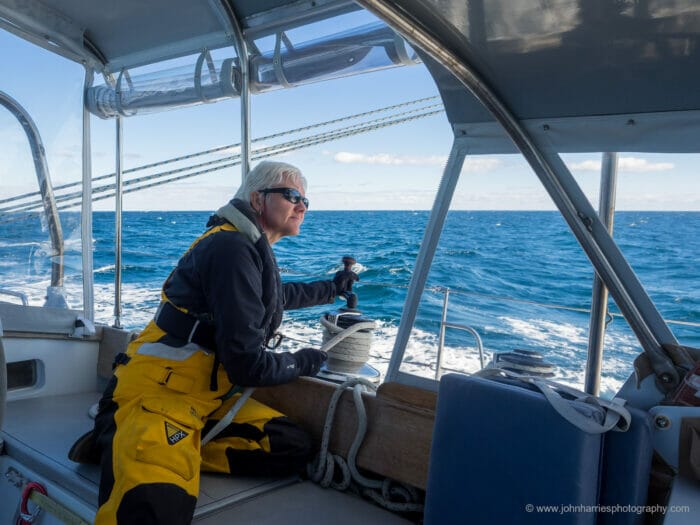
We have already published two chapters on offshore sailboat cockpits in our How To Buy a Cruising Boat Online Book, but even so there are still a bunch of selection criteria I have not covered, so let’s dig into winches, both those in the cockpit and generally.
Why It Matters
With offshore sailboats the devil is absolutely in the details and never more so than when we come to winch setup. A poorly-positioned winch:
- Can result in repeated injuries, particularly to shoulders, neck and back.
- Will force the crew into an awkward position so they can exert far less force on the handle than they would be able to otherwise.
- This in turn can require the installation of electric winches, with all of the associated expense and potential dangers.
- Can encourage crew members to adopt unsafe positions, often outside of the cockpit and in the way of the boom.
Given that, let’s look at how to identify boats with winches done right:
Login to continue reading (scroll down)
Please Share a Link:
More Articles From Online Book: How To Buy a Cruising Boat:
- The Right Way to Buy a Boat…And The Wrong Way
- Is It a Need or a Want?
- Buying a Boat—A Different Way To Think About Price
- Buying a Cruising Boat—Five Tips for The Half-Assed Option
- Are Refits Worth It?
- Buying a Boat—Never Say Never
- Selecting The Right Hull Form
- Five Ways That Bad Boats Happen
- How Weight Affects Boat Performance and Motion Comfort
- Easily Driven Boats Are Better
- 12 Tips To Avoid Ruining Our Easily Driven Sailboat
- Learn From The Designers
- You May Need a Bigger Boat Than You Think
- Sail Area: Overlap, Multihulls, And Racing Rules
- 8 Tips For a Great Cruising Boat Interior Arrangement
- Of Cockpits, Wheelhouses And Engine Rooms
- Offshore Sailboat Keel Types
- Cockpits—Part 1, Safe and Seamanlike
- Cockpits—Part 2, Visibility and Ergonomics
- Choosing a Cruising Boat—Shelter
- Choosing A Cruising Boat—Shade and Ventilation
- Pitfalls to Avoid When Buying a New Voyaging Boat
- Cyclical Loading: Why Offshore Sailing Is So Hard On A Boat
- Cycle Loading—8 Tips for Boat and Gear Purchases
- Characteristics of Boat Building Materials
- Impact Resistance—How Hull Materials Respond to Impacts
- Impact Resistance—Two Collision Scenarios
- Hull Materials, Which Is Best?
- The Five Things We Need to Check When Buying a Boat
- Six Warnings About Buying Fibreglass Boats
- Buying a Fibreglass Boat—Hiring a Surveyor and Managing the Survey
- What We Need to Know About Moisture Meters and Wet Fibreglass Laminate
- US$30,000 Starter Cruiser—Part 2, The Boat We Bought
- Q&A, What’s the Maximum Sailboat Size For a Couple?
- At What Age should You Stop Sailing And Buy a Motorboat?
- A Motorsailer For Offshore Voyaging?
- The Two Biggest Lies Yacht Brokers Tell
As has been so often the way this past year or so, you put up articles that are downright spooky in their timing. I just got home after a spending a few hours templating my winch and clutch layout on my coachroof – so this article has been a huge sanity check.
I think I’ve managed to tick all the important boxes. My boat has a grand total of 11 winches festooned over it, 4 forward on or near the mast for the halyards and reefing lines (and I’ve listened to your stern admonitions on this despite almost all local opinion going the other way), then 3 on the coachroof just forward of the cockpit, and finally 2 each side on the cockpit coaming.
Because my staysail track is already on the coachroof, the sheets go to the 2 outboard winches up there. In effect this gives me the ‘three winches each side’ you suggest. The same winches are also used for the minor mainsail trimming controls outhaul and vang, and the two traveller control lines.
The centre coach roof winch is used for the mainsheet only – not ideal but I’m going to live with it as the easiest solution to get me back into the sea. (The coachroof is low enough that standing astride the cockpit seats we get a good position to operate them.)
The cockpit primaries are jib sheet only, but the secondaries have four different lines, furlers, preventers, whisker pole and running backstay terminating on them. Trying to shift the mainsheet back there as well just struck me as too hard – even though I can see the advantages. The blocks and jammers needed to make it work are going to be complicated enough as it is.
I just counted them all up – a total of 30 different lines! Deciding on how I wanted to run them all has been one of the most drawn out and troublesome decisions I’ve had to make so far, and I want to convey just how much your input here at MC has influenced my thinking for the better. I couldn’t quite get to the ideal, but close enough that I’m really looking forward to getting it finally done!
Agree about the timing!
Only 11! Bah! 🤣 My old girl has thirteen – seven in the cockpit, two on the mast and – (this is where I have doubts) – four on the coachroof, under the gooseneck (reef, outhaul, topping lift, kicker). I can scrap the kicker and topping lift by fitting an hydraulic strut as per MC, and move the reefing winch to the mast. Then we will be even!
Now, now, boys, let’s play nice 🙂
Winches “r” us! Old picture from two years ago. The halyard, reefing and mainsheet winches are now self tailing and I just have to raid the piggy bank and talk to Mr Harken about replacing the six flat top monsters in the cockpit… your advice about not going for electric winches is very welcome!

Glad it was useful. As you say, getting this right is a real brain stretcher. Don’t worry too much about the mainsheet, there are always going to be compromises. In our case the less than idea winching position for the staysail comes to mind.
The other thing to realize is that you are not going to get this right the first time no matter how hard you try, and that realization can actually be a stress reducer, at least when we remember that changing this stuff is not that horrible, particularly on a fibreglass boat. Point being that getting a really good deck layout is a process, not a destination. After 30 years of steady improvement (starting from a good place) MC is about 95% right, but I can still think of little tweaks that would improve things further.
any thoughts on how much of a compromise are standard winches with Barton Winchers compared to self-tailing winches?
I have no experience with them yet, but I’ve got a pair of winches nearly for free and been contemplating getting rid of the staysail boom and using these standard winches with Winchers to sheet the staysail. Say, if you were forced to choose, which of these would be the lesser evil: staysail boom or non self-tailing winches?
I had a staysail boom for 29 years and whilst it was master of the foredeck when the sail was set, one could always drop the staysail on entering an anchorage. One does lose some horsepower but one can hank on a bigger staysail… on the other hand trying to sheet a staysail every tack with sub optimal winches is a pain in the neck. IMHO, fwiw…
Thank you for your opinion, Andrew.
Maybe I should have said that I’m talking about a staysail on a cutter. If need to short-tack, I tend to drop the staysail altogether and use just the jib-top, which is sheeted to self-tailing winches. So, I’m not sure how much of a pain in the neck it would be in practice. Definitely more work than when it tacks by itself, of course.
Tacking the staysail on a cutter, even one the size of MC, is so easy that I would always get rid of the boom. But then I’m a total deck clutter hater: https://www.morganscloud.com/2011/02/25/clear-the-decks-for-action/
Hi John, Andrew, Alex and all, John, agree completely about the staysail being a doddle to tack. When timing is good, snubbing the sheet before it fills pretty much precludes a need to winch. At most, a few inches is needed. For me, a chance to roll up the jib-topsail and short tack into an anchorage is just plain fun: no real work, total control (little worry about close-to-land gusts), good visibility, a chance to look around, no waves: what is not to like. My best, Dick Stevenson, s/v Alchemy
I agree, and as long as the water is smooth, a faster option than many would expect.
Hi John, Yes, agreed. It amazes me how easy it is to move a well-designed hull in flat water when there is little wind. I sometimes think that every boat should have as one of its base reported stats the force necessary (dynameter?) to pull it through the flat water on a calm day at, say, 6 knots. I imagine that would be an informative piece of information relatively easy to come by. My best, Dick
This was the home of the staysail boom – not in use in this picture.

Loverly photo of a loverly boat, thanks.
I tried the Barton years ago and found that while better than nothing they are not even close to a self tailing winch. That said, I would do most anything to get rid of a staysail boom, probably including using the Barton option and selling my first born child.
Thank you John. This answer is graphic enough to leave no doubt as to which way the boom should go.
Hi Phyllis The details in this picture are really interesting. What is orange fixture on your Spinlock left belt, and what kind of gloves are you using and do you like them? Would they be good for photography in Antarctica? How do you like the Musto Ocean gear? Thanks!
Picture of you at mast in today’s post:
https://etugri87v3i.exactdn.com/wp-content/uploads/2021/02/JHH5-12909-700×[email protected]
Best wishes, Charles Charles L Starke MD FACP
Hi Charles,
If you put those questions into the search box, or check the topics page you will find short posts that answer them with the exception of the orange fixture which was a pre AIS POB alarm.
Hi John, Thanks for the article. Interested in your thoughts regarding winch placement on the Boreal 47.2: central winch in cockpit for halyards, centerboard, vang, reef lines (single line for first & second reef tack/clew, 3rd reef has line for clew and hook/cringle for tack). Two inboard winches for Genoa, staysail sheets. I am not sure whether the main sheet goes to central or aft winches. Maybe JFE will chime in. Best, David
Lot’s of tradeoffs there. So beyond what I can really do in a comment. Suffice to say that I generally prefer the Mk1 boats. My big problem with the Mk2 boats is the friction in the system from all the turns in the lines. On the positive side, the inboard primary winches look like they would be very efficient to use on the jib, and an improvement on the problem I identified in the article above.
Hi John, The set-up of the cockpit of the 47.2 (what you call mk2) is indeed very different from the earlier generation of Boréal. For us it is important to stress the fact that the 44.2 has the same principles of cockpit lay-out as the “original” 44 : one helmpost, all lines at the mast… That way we have a solution for the adapts of both philosophies…
Hi Jean-François,
Having now looked at renderings of both boats, I’m warming to the 47.2 and I think prefer it to the 44.2 because of the longer effective waterline for the same beam.
Hi David, I’m almost positive the smaller outboard winches are for the main sheet. I think the red for main and hard to see dark blue for jib are meant to show that.

Hi Michael,
Yes, I’m sure you are right. And a good position it is too, although there will be a lot of friction because of the convoluted lead which will make say jibing where a bunch of sheet must be pulled in quickly, a bit slow. My guess is all these Mk 2 boats are going to end up with electric winches for this reason, although an Ewincher might work too.
Hi John, Hi Michael, The genua winches are indeed the bigger winches you see on the inner side the cockpit… The ergonomy behind is that during a tack manoeuvre, one person can release the genua from one side AND pull it on the outer side… There is only more block (however at 90 %) than on the layout on the Mk1. Of course there is more friction than if the block was not there but the sytem really works fine. I hope that very shortly you can come and test it for yourself… Speaking of electrics : The ergonnomy is such that all lines can be brought back to the big central winch. If you electrify this one you can do all manoeuvres with that one electric winch. (the winch is oversized to a 65 size). JFE
Thanks for the confirmation on that. Given that you can stand over the winches in a safe and secure position, I totally get that winching the genoa will actually be easier and more efficient than on the Mk 1 boats, or my boat, definitely a good step forward. On the other hand, if I were having a 47.2 built I would ask you to put the reefing and halyard winches on the mast since I just don’t like the idea of using an electric winch from that far away from the action. That said, way, way, better than under the dodger since on the 47.2 you can at least see what you are doing.
I think I’m right in saying you would make that change, although the channels for the lines running aft would remain? If so, that’s probably good for resale value.
Anyway, I’m really looking forward to going sailing with you once this is over.
At the start of this article I became a little depressed. Must we really accept headsail sheet winches on the leeward coming as the only option? The suggested seat-height, kneeling, and other recommended ergonomics; and MC’s cockpit jackline solution mentioned elsewhere improve the situation but the operator still has her centre of gravity to leeward of her centre of support with the winch handle carrying the rest of the load. I really dislike sheeting to leeward and value the ability to place a foot to leeward of the load very highly. Perhaps it’s because I’ve sailed smaller boats than MC that bounce around more and on which crew weight position makes more of a difference. Full approval from me that Boreal at least, have brought them inboard. I have yet to see a better system than my old 1/4 tonner, which offered near-midship sheeting and a windward sheeting option, with the crew able to get a foot to leeward of the winch, all within the cockpit, and with no extra turnblocks. Might be hard to achieve in a larger cruising boat, but totally worth striving for IMHO.

Sure, I agree that leeward coming winches are less than ideal ergonomically. That said, bringing them inboard has downsides too. All these things are compromises. That said, wait for the A40 renderings…
Amen to the round-up problem being exacerbated by vang and main sheet controls out of reach of the helm! I’ve experienced this, for example, while pushing my luck too far with the spinnaker up in squall zones, and it is not fun. In my most serious round up, with the boat pinned on her ear, I was only able to depower the main by, while keeping the tiller hard to windward with my arms, stretching my leg across the companion way and releasing the vang clutch with my foot. I haven’t thought of a way to mitigate this hazard yet, except by sailing more conservatively. I am hesitant to move anything because the current set-up allows me to work the jib (or spinnaker) sheets, main traveler lines (and the topping lifts and after guys for two poles) while standing in one place (tiller between legs), so I can tack and jibe safely while single-handing. I have five winches on the cockpit coaming (primaries, secondaries and a spare), and two on the coach roof under the dodger. I’m also a fan of working the main halyard, reefing outhauls, and downhaul (Cunningham) at the mast, and have it set up so that I feel secure there even when it’s rough – cross bars between the forward and aft lowers give me a place to brace my back. I have four winches on the mast, two each side, that I use for the main, jib, staysail and spinnaker halyards, as well as for tensioning my removable inner forestay. A clutch for each halyard (and the inner forestay) is very handy, for example while hoisting, and of course allows winch sharing. I set my reefing outhauls using a winch on the forward end of the boom with a clutch for each of the outhauls. A bag below the boom winch collects the lazy ends which keeps the deck clear. The winch mount on the boom has always served well, and it seems it’d be more complicated to have it anywhere else, but I wonder if I am overlooking something?
Sounds like a good system. And good on you for realizing the issues of not having the main sheet to hand. Even if you don’t change that because of other reasons (perfectly valid) understanding the problem mitigates the dangers.
And no, I don’t think you are overlooking anything. Halyard and reefing winches moved aft over the years, I think, just because that looks good to those with less offshore experience who are the larger part of the market for new boats, not because it’s a more functional layout. Same reason most new boats have fat sterns, two cabins jammed under the cockpit and no deck accessible storage: it looks good at a boat show.
The evolution at Boreal is a good example of this phenomena at work. When the principles were designing a boat for themselves (the Mk1 boats) based on a lot of offshore miles, the winches were on the mast. Now that they must compete with other “expedition boats” the winches are in the cockpit.
Bonjour Messieurs,
I understand the friction issue, but for a shorthanded passage I am happy to have most of the lines coming back to the cockpit on the Mk2. This feels safer to me than having to move to the mast everytime that a sail must be reefed, and only the third reef should need intervention at the mast in the Mk2. This was one of my requirements for our boat and it was heard by JFD. Being novice, I may be in the wrong of course, and only time and experience will let me see the light on that topic. In which case, we could still electrify the other four smaller winches, or at least two of them, since at the current time, only the central main winch is electric on our boat. But this is a very interesting topic indeed, and I am glad that John provided his insights on it. Thank you so much.
Salutations de Montréal, Yan
My thoughts on why it may not in fact be safer to lead everything back are here: https://www.morganscloud.com/2020/09/11/second-level-thinking-about-offshore-voyaging-boats/
That you must go forward for the third reef, when the conditions will be most challenging, but will not be practising that regularly in easier conditions is much of why I worry about this trend.
That said, if one must have the lines lead aft, I think that the the Mk2 way is better than having them all jammed up under the dodger. Also, if you find you have a friction problem an Ewincher way solve it much more easily, and safer, than electrifying all winches: https://www.morganscloud.com/category/rigging-sails/ewincher-review/
This is part of why, in our re-jigging of Maverick V ‘s mainsail handling, we’re keeping all halyards and reefing at the mast. At some point, you’re going to have to go out on deck in rough stuff – so it’s probably best for that to be a routine, one that you practice so often that it’s easy and normal, rather than a rare special event.
The other reason is that, with kids often hanging out in the cockpit, I want as few loaded lines as possible that they have to watch for. It’s easy enough to teach them to stay clear of the traveller, mainsheet, and leeward jibsheet, but if there’s an 8-line jumble of spaghetti in the way, it’s harder for them to learn what’s loaded up (and thus must be avoided).
We tried running the main halyard back to the cockpit for a bit, and that caused more problems than it solved. Friction wasn’t an issue, but keeping control of the halyard while dropping or reefing the main became a 2-person job. It’s going back to its as-designed spot, a winch on the starboard cabin top beside the mast, this spring.
Our winches are mostly tail-it-yourself style, but we are replacing the #8 reefing winches and horn cleats on the boom with #18 Andersen self-tailers and Lewmar DC clutches so that Katy can grind those in by herself. I am quite impressed with the Andersen build quality and, at least around here, they are among the least expensive options.
Sounds smart to me. I have never used Andersen winches, but have heard good things for years.
Just a note about Barlow and Barient winches. I recently inherited a few, and recently had a very satisfactory experience with Hutton-Arco in Australia, which stocks parts for both brands. Their service was knowledgeable, friendly and fast.
Another Barlow note: Rather than replace my big 1970’s non-tailing Barlow primaries, I converted them (about ten years ago) to self-tailing using the Winchmate kit. It took some fussing to get them to operate as smoothly as I wanted, but David Leitch was very helpful and we got there, and the $ savings were substantial. They have worked well. http://winchmate.com/
That’s good to hear, thanks.
I generally agree with the advice but am not sure I agree on the placement of primaries for all cockpit shapes. If you look at the second picture with Phyllis, it is extremely hard to effectively brace yourself fore and aft when kneeling on a cockpit seat (athwartships relative to the boat), especially when heeling. This means that there are 2 portions of the winch stroke which are really hard. The first is where the handle is furthest from your body, your leverage is not good, you are leaning significantly downhill and your body kinematics are not good at sideways motion. This one will always be true and the best solution is to be able to get over the top of the winch as you state. The second problem area is when needing to pull the handle back towards you, you often see people jerking backwards in awkward motions or trying to go back and forth in a different area using both speeds of the winch to avoid going around.
The best solution that I have found is to be able to stand behind the winch facing forwards. This gives you a good view of the sail but also lets you compensate for heel with your legs. Of course, the problem then becomes how do you actually create this standing area assuming you are not on a really big boat where everything can be done standing. On smaller boats, the best way that I know of is when a T shaped cockpit is employed and the winch is just before the cross in the T as far inboard as possible. It is quite easy to screw up this layout either with the sheet being in the way or interfering with the helm but done well I personally much prefer it. If you don’t have a cockpit that permits standing facing forward or aft at the primaries, then I think the suggested location is the best compromise. One other trick which I got from you but believe we differ on how much we like it is that a ratcheting winch handle can help if the winch is in the described location.
Of course if winching the primaries is the only goal and you can ignore other requirements, then a centralized setup like an IMOCA is best but that seems a bit extreme to me.
I agree, the best possible solution is to bring the winch into the cockpit where you can stand over it. The reason I did not go there is that, as you say, it’s just not practical on most existing cruising boats, which is our primary readership. (While I generally prefer the Mk 1 Boreals, I do like the primary winch positions on the Mk2.)
So given that and that I don’t like to see people getting into the habit of standing outside the cockpit, I would stick with my recommendation above, which I have found to work well. One thing that can screw that up is if the seat that one is kneeling on is too low.
Also, I kind of agree on the ratchet handle, in that while it has never worked well for me I think it might work well on a smaller boat with lower winch ratios. The problem on our boat is that since our primaries are a bit oversized and the ratio high, because of the size of the boat, it just takes too long with a ratchet handle, and conversely making a full circle and getting some momentum going works well.
And that brings up another point: I think that if people have trouble winching through a full circle in the position Phyllis is in, that’s an indicator that the winch is not powerful enough, not a problem induced by the position itself. Also, if they feel insecure, that may be because the coaming is too low and/or angled outboard too far. The latter is something I will write about more in a future piece that I have about half done.
My observation of cruising boat designs in the size range of interest leads me to believe that a decent percentage of them have T shaped cockpits but I don’t have any actual numbers to back that up. Of these, probably something like half would work well with winches setup for standing without major surgery, I have sailed on a few different boats doing this and I definitely liked it more but you usually can’t stand as outboard as is ideal so it is still not as good as a pedestal in the middle of the cockpit. I agree completely on not standing outside the cockpit. I am actually contemplating moving our primaries to exactly this position at the front of the T on our boat although it is not super high on the priority list. There are molded in spots for winches in the right spot, they were just not originally populated. Several owners have reported to the owners forum that they have made the change and it has been a big improvement. At the same time, I would update to winches with spring loaded self-tailers as the current winches are an appropriate ratio but push us into larger than needed sheets and those still want to fall out sometimes.
Your comments on speed and ratcheting handles got me thinking and I believe that one of the tricks is that humans do not have constant power output over a very wide range of speed. At low speed, our torque output does not increase as much as our speed dropped and at high speed, our torque output falls quite quickly until you just can’t spin any faster even at no torque. If we assume that winches are the same efficiency regardless of gear ratio, which is not a terrible assumption, then we want to be operating close to our peak power output point as the energy output of the system remains the same regardless. In the real world, it is very hard to do this because our leverage changes depending on where we are in the rotation and the load on the sheet changes depending on several factors. Ideally, the ratio would actually vary based on where you are in rotation but that becomes a very fancy winch and we should all just buy Ewinchers first as they solve this and other issues. The worst would obviously be a gear ratio that is not deep enough so you struggle to grind but going overly deep is not good either. Ergonomics will play a big part in the right winch gear ratio and also lead to a much less fatigued sailor if done right, I think you want to be just short of bogging down in the worst case scenario and then rely on the multiple speeds to help improve efficiency in lower load situations.
Good point about bringing the winches inboard on T shaped cockpits. I have been thinking a lot about this in relation to the Boreal 47.2 and am warming to it. No question that standing over a winch is best. I will write more on that soon.
Also interesting about our torque output. I think that explains well our different experience with ratcheting handles. Also it confirms my doubts about the new four speed winches we are seeing on some boats.
I hadn’t realized that there are now 4 speed winches available, interesting. I wonder what the ratios are? If you are only looking for max power or efficiency in an application with variable load, having more gears is always good as you can better fine tune speed and torque. However, the real world includes things like size, weight, cost, reliability, control logic, etc that don’t always make that a good idea. I think that the auto industry provides an interesting view into this, it used to be that everyone drove cars with 3 speed gearboxes and now many are 10 speed or even infinite within a band (CVT’s). It isn’t like they are only just learning the laws of physics, they are optimizing differently and there have been technical advances too. 3 speeds used to be considered a reasonable compromise, sure you were often not in the powerband of the engine or it was revved up real high when you didn’t need a lot of power but it got the job done cheaply. At the same time, the tractor trailers often had 12+ gears, sometimes in 2 sequential boxes, because they were extremely power limited so needed to be able to get the right ratio and with professional drivers, they could. As people demanded more performance from cars, transmissions crept up to be 4 or 5 speeds but didn’t go higher. From a sales standpoint, I suspect that it was due to users not really understanding the complex product and just focusing on how many horsepower it has. From a performance standpoint, engines had gotten to silly high power levels so the performance was fine and actually, they would have accelerated more slowly if they had to shift more as shifting is time consuming. The car companies have continued to push performance but also are now having to push efficiency and finally we have seen a very quick jump to approximately double the number of gears. This would not have made sense without also vast improvements in how quickly gears shift. Can you imagine going along efficiently at 60mph and 1500 rpm, pulling out to pass someone, mashing the throttle and waiting 3 seconds while it slowly shifted down through 2 gears so you were at 4000 rpm? Since this was not acceptable, they used to just have you cruise along at 3000 rpm burning more fuel and then you might drop 1 gear at max but often none. The setups now do a great job of allowing you to cruise along at a low and efficient rpm but then very quickly shift to a high rpm for power and the control logic is good enough that it doesn’t bother the user like slushboxes of old.
Applying this to sailboat winches, I am not sure exactly what is right. My guess is that the average user would not be particularly good about knowing when to change gears but the top users would be, just watch people ride a bike or drive a manual transmission car and see how many are not doing the right thing. Then there is the question of how gears are changed, if it is time consuming or tricky, that can negate all of the positives. If someone really wanted to nerd out on this, they could use a stationary excercise bike with a true power readout to map out speed versus power by simply varying the resistance.
One other lever that people have to pull is of course winch handle length, I am aware of 2 lengths but there may be more. If someone finds that they have slightly deeper of a ratio than they need, it could be that going to the shorter handle is better. Depending on the ratios, you may find that in the other gears, it is less optimal though so you need to optimize over the whole range of conditions. I suspect that America’s Cup teams have the data and optimize around this stuff but for everyone else, they use some rules of thumb and move on.
That’s really interesting and get’s me thinking about all sorts of winch related stuff including that I have noticed over the years that long duration winching, even at comparatively low loads, can be more exhausting than short duration at high load, even though similar amounts of work are getting done. The classic example is winching in the jib top furling line on MC feels more onerous than bringing in the lee sheet after a tack. That was the basis of my scepticism of 4 speed winches. But then again I have never tried one, so I could easily be wrong about that.
Thanks for your insights into human power development and ergonomics Eric; most interesting. Your observations seem to have many parallels to bicycling, where a dozen or so gears 10%-13% apart have been found optimal. It will be interesting to see how far down this path winch manufacturers will go. Will we see a 10-speed winch at some point? In the meantime, short and long handles for light & heavy jobs seems like a wonderful progressive step (simple & cheap.) While thinking about handles, the Ewincher offers another solution. E-bike makers are just cottoning onto the fact that they don’t need to provide so many gears so closely spaced. The e-assist makes up the difference between more widely-spaced gears. An Ewincher might prove a more reliable, fault tolerant, and redundant option than a future 4-10 speed winch.
I agree on Ewincher, See our in depth review: https://www.morganscloud.com/category/rigging-sails/ewincher-review/
Good article, John!
Our winch plan on Beatrix (44′ cutter) is very similar to your suggestions.
Part of selecting winches should be a consideration of maintenance issues. Servicing is a n important (and often neglected) task that should be done at once or twice a year.
When I re-winched about 20 years ago the sales guys at Fisheries Supply and I took apart an Anderson, a Harken, and a Lewmar to check the ease of servicing. Anderson was by far the easiest and Lewmar was the worst. We chose Harken, partly because they had a 15% off RRP program at the time which, combined with my 40% commercial discount, saved us a LOT of money, but most important was that they are good winches and Harken had a good customer service reputation.
For the primaries, we have 2 big 3-speed Harken 56.3ST winches. The insides resemble a Porsche transmission. ( I’m happy with the 3-speed winches but 2-speed would have been fine.) Kathy does all the servicing (she’s the “winch wench”) and she does it regularly. Unserviced winches eventually break teeth or become hard to use.
We also carry spare parts: all plastic components like the upper jaw, plus various washers, springs, pawls, and detent balls. Occasionally a tiny part is lost during servicing. The plastic upper jaws are all original. Where the winches are duplicates we don’t need a complete spares kit for each one.
Last, and not totally relevant to the topic, Sunbrella winch covers keep out dust and UV when not in use.
Cheers Jeff
I agree maintenance is important, although I have never found that the Lewmar winches were a problem, but then we have the older ones that I think were better in this regard.
That said, I don’t think a full maintenance is required every six months, or even once a year. Maybe on a race boat, but not on a cruising boat. My experience is that a full strip and clean every three to five years is fine.
If we did a full strip and clean every six months on MC, that would be fantastically onerous, given that it takes three full days for two of us to do all the winches on the boat properly.
A little bit of planning and practical geometry allowed us to put larger primaries (Lewmar 44s, rehabbed, freshwater-only “Ocean Wave” models from the ’90s) between our Andersen 40 primaries and our single speed Andersens we use for the staysail sheets. The heights differed enough so that the biggest winch, the Lewmar, clears the rest with the biggest winch handle. We can get right over the winches on the centerline standing in the footwell and all lines run fair through blocks from forward. The rest of the winches are at the mast (more Andersen 40s). The largest winch handle clears the Lewmar by 3 mm or about 1/8th of an inch.
If we need to winch the staysail sheet, it’s usually just one or two cranks, so the inability to do a full circle was no real compromise. We have no coamings on our rather strange boat, and so often attempt to think in non-obvious ways, such as “height of winch tops” to solve problems. We carry spares for both the Lewmars and the Andersens, both of which were easily obtainable and we strip down all winches for cleaning and related service (the occasional pawl replacement, mostly) every two seasons.
Hi Marc, this sounds like an interesting setup – do you have some photos available?
There are two photos in this blog post of interest…we had a busy month aboard. https://alchemy2009.blogspot.com/2019/07/good-grief-we-are-aboard.html
Thanks Marc! This is truly an unusual setup, but seems perfect for the functions intended. (hope you never have to use it to winch in a drogue…)
That’s actually what the aftmost Andersen 40s would handle, not that I anticipate that with enthusiasm as we’ll have to practice deploy the drogue in order to practice retrieving it! We are installing our drogue chainplates before launch in the next 60 days or so.
I find Pontos [now Karver] 4 speed winches a dream to use for the headsail primaries in my old age, and agree an Ewincher is perhaps the only satisfactory solution if the boat builder has stupidly put the mainsheet winch on the coach-house.
That’s interesting. I was sceptical about the 4 speed idea figuring that upping the ratio would just make the grinding job longer, albeit easier.
I truly love this site and it never fails to give me information I desperately need (even as it highlights more tasks to add to my already MASSIVE ‘to-do’ list!). While I realize that there are endless configurations of gear and systems, would it be possible to post a few “generic” evolutions for we somewhat crazy new-old boat owners? For example, “this is what I look for when inspecting and servicing my wheel steering system”. It certainly won’t look exactly like mine, but given that it performs the same function it should have useful similarities… and generate lots of horror story comments…
Hi Martin, Edson has maintenance manuals ( https://edsonmarine.com/product-tech-support-manuals-guides-and-maintenance-sheets/ ) that will give you most everything you need to inspect steering systems and to determine their current state and guide further care. My best, Dick Stevenson, s/v Alchemy
Thanks for the kind words.
Although we don’t have an article specifically on checking steering systems we do have over 1150 articles. I would guess that over half of those are on some aspect of boat maintenance. They are also categorized and searchable (see top menu) so a lot of that is already done. And we have an online book specifically on maintenance: https://www.morganscloud.com/category/maintenance-refits/book-maintaining-cruising-boat/

- standing rigging
- rope and line
- cams, cleats and clutches
- head sail gear
- roller furling
- main sail control
- mast hardware
- eye straps and pad eyes
- fairleads and bulls eyes
- anchor and docking
- miscellaneous hardware
- Alexander Roberts
- My Wishlist
- Customer Service
- Order Tracking
- Your Account
- Store Policies & Info
- Privacy Policy
- Helpful Links
- Payment Methods
Shopping Cart: 0 Items

- Forum Listing
- Marketplace
- Advanced Search
- About The Boat
- Gear & Maintenance
- SailNet is a forum community dedicated to Sailing enthusiasts. Come join the discussion about sailing, modifications, classifieds, troubleshooting, repairs, reviews, maintenance, and more!
Mast-side winches for main halyard? or what?
- Add to quote
My Newport 30 Mk ii has the main halyard and reefs led back to the cockpit, so there is a winch on top of the cabin (at the cockpit) for cranking on the main halyard. There are also winches, slightly smaller, perhaps, on the mast's sides, at the level of the gooseneck. I use the port-side winch for the jib halyard, and I have never used the starboard-side mast-winch, which is the same side as the main halyard. What is it for? Can I use it for the main halyard? Only in a pinch, or all the time? Or do I need to install new winches near the base of the mast, on the cabin top? I'd like to eliminate the cockpit-led stuff because it doesn't really provide the convenience it ought to. Mostly it just causes me to run back and forth between the cockpit to the mast.
According to your specs the mast mounted starboard winch is for the Main Halyard. Though, if your Halyards are now led back to the cockpit, I'm not sure why you wouldn't want to use them. I guess the real question is why you have to leave the cockpit when using the aft led Halyard? Are they properly led back? Is there a Turning block at the base of the mast on the starboard side led to a clutch or a guide in front of the cabin top winch? You shouldn't have to go forward if the halyards are properly led aft. ( same for the Jib) Any photos?
When I raise the main, either the reefing lines get caught on something and I have to go up to free them, or the battens get stuck in the lazy jacks, and I have to go up and pull the main down to free those.
Which winch is easier? Sailed old swans which had its winches on deck. It was hard to use them. If they are two speed it’s easier to winch a long line when it’s on the side on the mast. Also you can “jump” the line then. Try it both ways and see which poisition you prefer. My main halyard is brought aft but it’s powered. It’s a line you pull every time you go sailing and is long.
FWIW I do bow on a 50 footer (cruising boat that races PHRF). When setting the main I have to carefully time the hoist (jumping the main halyard) to clear the lazy jacks. With a bit of practice it's not that hard to get the timing right, and then you don't have to clear anything. If you've got the strength to get the main partway up without grinding the winch, then I definitely recommend going that route.
Why aren’t you pulling the jacks back to the mast before setting out. We’ve never hooked the jacks and I got 4 full battens
chef2sail said: Why aren't you pulling the jacks back to the mast before setting out. We've never hooked the jacks and I got 4 full battens Click to expand...
- ?
- 174.7K members
Top Contributors this Month

- Forums New posts Unanswered threads Register Top Posts Email
- What's new New posts New Posts (legacy) Latest activity New media
- Media New media New comments
- Boat Info Downloads Weekly Quiz Topic FAQ 10000boatnames.com
- Classifieds Sell Your Boat Used Gear for Sale
- Parts General Marine Parts Hunter Beneteau Catalina MacGregor Oday
- Help Terms of Use Monday Mail Subscribe Monday Mail Unsubscribe
Winch for mast raising
- Thread starter shanker
- Start date Jul 19, 2011
- Hunter Owner Forums
- Smaller Boats
Does anyone know what size of winch would be required to raise the mast of a 260? I'm looking at a 2000lb winch but I remember reading that the first 30 or 40 degrees of lift is quite stressful. Here is a link to the winch I'm considering. http://www.etrailer.com/Electric-Winch,Trailer-Winch/Superwinch/1220210.html
Jim Seamans
Shanker, When I had my H260, I placeed a block at the anchor and brought the line from the gen pole thru the block and back to the jib winch. Usually it took two of us, Joan would crank while I pushed up on the mast until I was about 30degs up, then check the shrouds and continue cranking until the mast was up. Did the same thing in reverse as we brought it down. Sure wish I had take video of us doing this...
I have a Polaris Sportsman ATV that I have occasionally used to raise the last with, I used a 2000lb winch with no problem at all. But seeing as the first 30-40degrees are tough, I was careful to make sure nothing pinched or was cockeyed before hand. But as far as weight goes, you should have no issue. Brad s/v KIVALO
Check out Soling42's posts. He has some great pictures of how he's got his winch rigged up. I've done the same (12v 3000lb winch from Harbor Freight and a 12v power pack). Put in a welded eye bolt in the base of the winch and use a shackle to connect to the anchor locker. I always hook up the main sheet as normal as a back up, but so far no incidents. Pulls the mast up like a knife through butter. BUT....just like normal mast raising, you have to watch for anything is pinched, twisting wrong, and your shrouds are not cock-eyed. You have no feel for when something snags when using an electric winch. Also, due to the pulling angle, I have to use my foot to keep the drum release from rubbing on the side of the anchor locker. No big deal, just something you have to deal with. All in all...a great way to make rigging a 260 sooooooooo much easier, especially as I get older (already pulled by back out of shape once raising the mast). If you're not comfortable with the electric winch, the using a square knot or a sheep-bend, connect the mainsheet to another line (my jib sheets is same size (overbought)) and run the line over the cabin to the winch and use the winch to pull up the mast. You just have to watch the knot doesn't catch on cabin hardware. By the time the knot gets to the winch, the mast is high enough to easily pull up the rest of the way by hand. Good luck and fair winds.
At 42' above the waterline the 26/260 has a lotta mast to raise safely. But it can be done often, easily and safely. Here's what I've used for years, usually on the water in minutes especially when I had a free dock for our boat on the WRONG side of a fixed bridge. I have a 2000lb harbor frieght 12v ATV winch w/wired remote and brake usually on sale for $49 that might weigh 8-10lbs. The updated one you posted looks basically the same and although it's not shown, it says it comes with a remote and the specs say 42lbs(which i strongly doubt). Mine simply clamps to my jump start pack with the large jumper cable clamps. I bolted a 3/8" eye bolt directly behind the center of the drum and retrieve the cable while gently tilting the winch so it feeds on evenly. I can stop at even the most impossible spot and it easily continues in either direction with complete control. Necessity is the mother of invention they say. It's a really simple system powered by a 12v jump start pack that's all easily stowed in a small canvas bag and as Deaucer so kindly said, it's as smooth as butter. There are a few other simple but important mods I use to keep the shrouds aligned, turnbuckles upright, stow the gin pole conveniently and easily draw down the forestay without over tensioning the rig. All added up to be a much smoother, safer and problem free system. Be safe and have a great season, Mike
Attachments

soling42 said: At 42' above the waterline the 26/260 has a lotta mast to raise safely. But it can be done often, easily and safely. Here's what I've used for years, usually on the water in minutes especially when I had a free dock for our boat on the WRONG side of a fixed bridge. I have a 2000lb harbor frieght 12v ATV winch w/wired remote and brake usually on sale for $49 that might weigh 8-10lbs. The updated one you posted looks basically the same and although it's not shown, it says it comes with a remote and the specs say 42lbs(which i strongly doubt). Mine simply clamps to my jump start pack with the large jumper cable clamps. I bolted a 3/8" eye bolt directly behind the center of the drum and retrieve the cable while gently tilting the winch so it feeds on evenly. I can stop at even the most impossible spot and it easily continues in either direction with complete control. Necessity is the mother of invention they say. It's a really simple system powered by a 12v jump start pack that's all easily stowed in a small canvas bag and as Deaucer so kindly said, it's as smooth as butter. There are a few other simple but important mods I use to keep the shrouds aligned, turnbuckles upright, stow the gin pole conveniently and easily draw down the forestay without over tensioning the rig. All added up to be a much smoother, safer and problem free system. Be safe and have a great season, Mike Click to expand
The gin pole maintains the feed at a near perfect angle over the drum even with the mast down and the gin pole vertical. Secondly, with the eye directly behind the drum it balances the load nicely and the whole winch easily pivots just enough to correct for the angle up/down. Generally when raising the mast I only need to gently pull down/up on the tail of the winch to feed the line onto the drum more uniformly. While lowering, once it's loose I unhook the cable hook from the gin pole eye and drop the loose cable, winch and remote into the canvas bag in the pic and set it down in the V-berth hatch. I also removed any unneeded cable from the winch making sure to secure the tail on the drum and leaving 4 or 5 wraps at it most extended length. Good luck and be safe. mike If you could see it done, it's really a sweet set up. It's so easy even your snacktician can do it, but she may not be happy(she's happier with the new boat.....(pic of an earlier trailer mount version on a 240. The on-board version is far better)

Winch Hey Mike, that's what I'm talking about!! Good to know that a 2000lb winch will make that lift, that was my biggest concern. I will heed the advice of going slowly, making sure nothing gets tangled or kinked. I believe this will be a winter project for me. Well done Mike. Shanker
Shanker, I don't use the electric winch for putting the mast down. I just hook up the main sheet like the book says and push it over. One thing I didn't mention (and this is true if you use the main sheet, or an electric winch). If you run the jib halyard through the fairlead, then tie if off, it puts a LOT of torsion on the mast (broke the foot once). I use a second line ran the opposite way and cinch it up real tight. That minimizes the torsion on the mast. I think Mike ties his jib halyard to the mast which eliminates this issue. I just haven't had time to play with that method.
Deucer said: Shanker, I don't use the electric winch for putting the mast down. I just hook up the main sheet like the book says and push it over. One thing I didn't mention (and this is true if you use the main sheet, or an electric winch). If you run the jib halyard through the fairlead, then tie if off, it puts a LOT of torsion on the mast (broke the foot once). I use a second line ran the opposite way and cinch it up real tight. That minimizes the torsion on the mast. I think Mike ties his jib halyard to the mast which eliminates this issue. I just haven't had time to play with that method. Click to expand
My halyards exit at the foot of the mast toward the front, causes a lot of pull to port.
Deucer, It'd be better to pull up some slack and tie it off around the mast at the base or at the exit point. There'd be no twist then. When stepping the mast I actually use both the jib and spinnaker halyard attached to a D shackle on my gin pole. They divide the load and I have a backup if one were to fail. Since I have a jib furler I then just leave the unused jib halyard attached to the gin pole(it acts as a leash since I lost a $120 gin pole overboard, arrgg) and clip the pole against the mast into a couple of pvc couplings pop riveted on the mast. That way it's out of the cabin and yet far more easily available. Here's a pic of a $1 mod that's worth its weight in gold. Have a great day, Mike

shanker said: Does anyone know what size of winch would be required to raise the mast of a 260? I'm looking at a 2000lb winch but I remember reading that the first 30 or 40 degrees of lift is quite stressful. Here is a link to the winch I'm considering. http://www.etrailer.com/Electric-Winch,Trailer-Winch/Superwinch/1220210.html Click to expand
I have not tried an electric winch, though it is obviously somewhat easier. I use a 4-to-1 block and tackle that the prev owner left me (not the main sheet blocks, but similar) and a long line. I use an aluminum (pretty thick walled) tube as a gin pole, also left by PO. No spinnaker halyard, so I just use the jib halyard to the pole, then the block and tackle attached to the pole, and the other end to a welded eye on an extension tube mounted to the trailer's vertical bar (the bar that holds the trailer winch). The free end of the line runs aft through the jib sheet block to the jib winch. That winch provides plenty of power with the 4-to-1 blocks to lift or lower the mast, and I like the manual control - you are cranking it up slowly, and can work with your "mast holders" to ensure no wraps or shroud twists.
Futsal Fred
I really feel the need to add some things here. First of all, cheapass winches are usually worth exactly what you pay for them. Sometimes you'll get good service and sometimes an assembly which represents the cheapest down and dirty components that the Chinese can find only gets you a serious accident waiting to happen. First of all, forget the line in the ads which says something like "weather resistant". What you need in this application is "waterproof", a very specific designation which means what it says and does not short out when you use it on, oh, let's say, a BOAT. Now maybe you never ship a drop of water but I'm willing to bet that wherever you are it rains occasionally. What exactly is your contingency plan for the mast being half way up (or down) on the end of a 5/32 steel cable when the crummy Chinese motor gets a few drops of water in the wrong place and quits? There certainly are waterproof winches out there. They just cost more than $40. Second, steel cable? Seriously? Aside from the weight, steel - are you sitting down? - rusts and corrodes and degrades and wears out and breaks. Even if you only use it once a year, unless it's in a dry place - which does not mean an anchor locker - moisture will be working away on it. Truly. These things are available with synthetic - usually nylon - cables which are not only one hell of a lot better suited to a marine environment but also - happy day - make the whole unit weigh about half as much. And in the event of catastrophe they won't a) gouge out a huge chunk of gelcoat and b) won't rip out a huge chunk of human flesh. The other advantage is that you don't have the problem with the cable not spooling correctly. Standing there tipping the unit back and forth probably does work but it's dangerous. These things have claimed one whole heck of a lot of fingers. Third, pay close attention to the amp draw, then compare that with the "ft per minute" rating on the winch and the potential in your power pack. I've seen Harbor Freight winches that specifically tell you to run for no more than 15 seconds and then let it "rest" for 15 minutes before powering it up again, at which point the amp draw was so big that you'll need that time to go power up your jump box again. And I guarantee you that your mast isn't going 100% vertical in 15 seconds. There are also winches out there that pull 6 ft. per minute. They use low amps but you'll fall asleep waiting for your mast to get up. Fourth, when they brag that the unit has "dynamic braking" do you really know what that means? Seriously? And do you trust Chinese slave labor to assemble it correctly or even tell you the truth about it? This is your life we're talking about here, never mind the $30,000 boat. You're putting all of that in the hands of a low grade steel friction clutch (there's that steel thing again; moisture and carbon steel don't mix) with steel bearings bought from the lowest bidder in Shanghai? Really? Spend $200 or so on a decent waterproof winch with a synthetic cable and a decent remote. Safety isn't something you go cheap on.
I looked at just about every 12 volt winch I could find in person. The "cheap" one I bought is more than adequate for my needs. I don't leave it in the boat, it stays inside my truck nice and dry. It pulls about 12-15 fpm with the light load of my Hunter 23 mast. It has a rated capacity of 2000 lbs but I am only lifting maybe 100 lbs or less. If I could find a similar winch made in the USA I would buy it even if it cost twice as much.
While a Chinese winch is cheap(along with just about everything else Chinese made) I've had excellent service from this little HF version due to the fairly light loads it easily and quite quickly handles. If I'd have had to over design this simple lift system with all things marine grade and American made for it to only end up stored 99% of its life it would've been ridiculous on a trailer boat. The reality is that these components have seen over 6years of use, are easily removed to a dry location after each use and with a through inspection they're still in like new condition. A lot of passion went into your post but reading between the lines it understandably sounds like it your concern revolves around shipping jobs overseas which we can only fix when Americans regain our former mfg lead. There's just not enough room on this site for what it'd take to do that. After years of use, your concerns of rust and potential failure from strain are simply over stated if the winch is removed (permanently mounting this winch is out of the question but was never the app). Hey Fred, here's a friendly challenge for those of us with bad backs and light wallets. Revise this very simple design possibly even using an 18v Dewalt 1/2" RA drill(or any inexpensive American made ver) and I'll gladly throw this HF winch into the sea to spend its last days as a fish reef....seriously.
Don't get me started on imports, trade or union issues...this is a great, safe and reliable solution for me. I buy local when possible but why spend $200 on a winch I use twice year? The idea of replacing the wire with rope sounds good but for now it works great.
- This site uses cookies to help personalise content, tailor your experience and to keep you logged in if you register. By continuing to use this site, you are consenting to our use of cookies. Accept Learn more…


Image Unavailable

- To view this video download Flash Player

XL Flag Elektrostal Moscow oblast | landscape flag | 2.16m² | 23sqft | 120x180cm | 4x6ft - 100% Made in Germany - long lasting outdoor flag
Purchase options and add-ons, about this item.
- 100% Made in Germany » ... because the first impression last, quality flag for representative purposes *****
- State-of-the-art High-Tech Outdoor Fabric » One air-permeable 110 GSM Polyester to keep wind forces low and lifetime high
- Mirrored Back » Image printed on the front, mirrored image 100% visible on the rear side
- Landscape flag | 2.16m² | 23sqft | 120x180cm | 4x6ft
- Show your pride for your hometown with the Elektrostal flag! Made with quality materials and vibrant colors, this flag is the perfect way to display your patriotism and love for your city. Fly it proudly at home, at events, or even in your car. Get yours today and show your Elektrostal pride!
- The flag of Elektrostal, Moscow Oblast, is a striking combination of Old Glory red, representing strength and courage at 81%, complemented by a subtle touch of light grey at 5% for balance and harmony. The bold black stripe at 3% adds a touch of sophistication, while the shimmering gold stripes at 3% each symbolize prosperity and success. The flag is completed with a touch of very dark grey at 1%, representing the city s resilience and
- Elektrostal Moscow oblast
Product information
Warranty & support, looking for specific info, product description.
Flag: Elektrostal Moscow oblast landscape flag | 2.16m² | 23sqft | 120x180cm | 4x6ft Elektrostal Moscow oblast Elektrostal obwód moskiewski , flaga ???????????? ?????????? ??????? Since we know how important your external presentation is, we print our Elektrostal Moscow oblast flag for your representative appearance using the most modern machines in Germany. To ensure your maximum flexibility, we have equipped the flags with quality metal eyelets, to let you simply attach these flags to any flagpole. To let you use the flags for a long time, we have strengthened the flag using double safety seams and a tear proof strap at the side of the pole. Due to the quality of this business flag, you show a particular degree of the closeness to Elektrostal Moscow oblast. Details about this flag This landscape Elektrostal Moscow oblast flag is a quality product Made in Germany made of 110g/m² gloss polyester. This Elektrostal Moscow oblast flag is wind- and weather-resistant and highly durable. The flag colors are intensive and UV-resistant. This flag is specially made for outer space. This Elektrostal Moscow oblast flag will be delivered with a double safety-seam as well as with 2 metal eyelets to hoist at the flag pole. The metal eyelets give you great flexibility for placing this flag on any flagstaff. The mast side is reinforced with a white hem. The quality flag material and the metal eyelets will take care of a long endurance of this Elektrostal Moscow oblast flag. If required, the flag can be washed at 60 degrees Celsius. Recommended height of flag pole Elektrostal Moscow oblast flags of 2.16m² | 23sqft | 120x180cm | 4x6ft look best with flagpoles of around 6m | 18ft height. Need a bigger size or an other configuration? We can provide bigger sizes, other configurations, exclusive indoor ...
Customer reviews
Customer Reviews, including Product Star Ratings help customers to learn more about the product and decide whether it is the right product for them.
To calculate the overall star rating and percentage breakdown by star, we don’t use a simple average. Instead, our system considers things like how recent a review is and if the reviewer bought the item on Amazon. It also analyzed reviews to verify trustworthiness.
No customer reviews
- Amazon Newsletter
- About Amazon
- Accessibility
- Sustainability
- Press Center
- Investor Relations
- Amazon Devices
- Amazon Science
- Sell on Amazon
- Sell apps on Amazon
- Supply to Amazon
- Protect & Build Your Brand
- Become an Affiliate
- Become a Delivery Driver
- Start a Package Delivery Business
- Advertise Your Products
- Self-Publish with Us
- Become an Amazon Hub Partner
- › See More Ways to Make Money
- Amazon Visa
- Amazon Store Card
- Amazon Secured Card
- Amazon Business Card
- Shop with Points
- Credit Card Marketplace
- Reload Your Balance
- Amazon Currency Converter
- Your Account
- Your Orders
- Shipping Rates & Policies
- Amazon Prime
- Returns & Replacements
- Manage Your Content and Devices
- Recalls and Product Safety Alerts
- Conditions of Use
- Privacy Notice
- Consumer Health Data Privacy Disclosure
- Your Ads Privacy Choices

IMAGES
VIDEO
COMMENTS
Sail Area. Efficient sail handling begins with the selection of the correct winch. To help you select from the winches described on this site the chart below is designed as a quick reference to match application, yacht size and winch. Cross reference your yacht size (for masthead rigs) or sail area (fractional rigs) with application, to ...
Harryeod. 108 posts · Joined 2006. #4 · Jun 20, 2008. Both my mainsail and head sail winches are mounted on the mast, directly across from each other. SD is correct, the winches are mounted at the height that an average size person can operate them and not have to bend over or stretch to reach them.
Dynamic/Seitech Dollies Compatible Parts. Type 1: Boats up to 250 lbs Dollies. Type 2: Laser, Byte & Invitation Dollies. Type 3: Curled Gunwale Boats Dollies. Type 4.1: Small/Med Bowsprit Boats Dollies. Type 4.2: Heavier Sprit Boats Dollies. Type 5: Heavier Doble-Handed Boats Dollies. Type 6: Optimist Dollies.
E-SERIES Electric winches. E40, E46, E52, E60, E66. Operates with three velocities for precise and efficient sail handling. The high-speed mode is an electric overdrive and perfect when pulling the slack of for instance a long and unloaded genoa or Code 0 sheet.
Since 1961, RIG-RITE has engineered, manufactured and distributed Spars, Rigging and Hardware Systems for Sailboats. RIG-RITE stocks the largest variety of related Systems and Hardware available anywhere, Specializing in original replacement parts for Systems on yachts built the world over. Spars - Masts, Booms, Spreaders, Spinnaker Poles ...
Re: How to mount a new winch on mast. Quote: Originally Posted by sailormed. Teak block covered with thick aluminium plate. Teak block fits the curvature of the mast. Holes in plate conform to new winch. Plate screwed to mast with old holes. Nuts for new winch welded to the teak side of the plate.
Bronze is extremely hardwearing, making it a good choice on sailboats. Bronze was the traditional material for winches but it looks outdated on modern yachts. Chromed bronze makes the most of the durable bronze but adds a modern look with a chrome outer layer. These are pricey but excellent winches.
Electrical winches are available as a solution to short-handed or overpowered sailing. Winches are sold based on material as well, whether you want the lightweight of an aluminum winch, an appealing chrome sailboat winch or if you are looking for the visual aesthetic of a stainless steel yacht winch. Technical assistance is provided to help you ...
Mast Winches. The power that a person can easily exert on a waist-high winch with a double-grip handle must be experienced to be appreciated. Also note the mast pulpit next to Phyllis keeping her contained and safe. ... Therefore, cruising boat winch sizing should at least conform to the winch manufacturer's sizing chart, and a size larger is ...
I deceded to move my lines back to the mast. I installed clutches aboyut 5 inches below the exit of the internal halyards, and will be installing a winch on each side, as close to the ground, (probably 2 feet off) THe Winches are a pair of Lewmar ST 30. I will be using teak blocks. The boat is a Catalina 36 MKI and the mast is fairly flat.
Yacht and Sailboat Winches contribute significantly to your boats performance and your ease of sailing. We offer both non self tailing and self tailing sailboat winches by Andersen, Lewmar, Selden and Harken. Whether you chose self tailing winches, an electric winch or other style of winch it will help improve the ease and use of your boat.
Use the largest winch you have on the boat - use some extra blocks to get a good lead to the winch. ... We ALWAYS use the sheet winch as for the primary, and have used the mast winch for a back-up safety halyard. However, I prefer keeping the deck below the mast clear of people in case of an accident, so using sheet winches for both primary and ...
May 8, 2011. 189. ODay 25 Cambridge. May 25, 2013. #2. I installed a winch on my Oday 25 for the mainsail halyward. I got the winch pad from Selden at www.seldenmast.com. Search for 'winch pad' and go to page 68-69 of the product catalog. The winch pad was installed using a cheapo rivet gun I got off ebay (used).
The winch in this location will do two things primarily: 1. be used to reef the leech of the sail thru blocks that run the line fwd from the aft end of the boom. 2. And be used to help raise the jib Halyard. The boat is a 41 foot Cheoy Lee Offshore (Sloop) with a sail area of just under 900 Sq/ft (total) The Genoa I have is a 90%.
We sail a Taswell 43-with a 64' mast. I am 77, and weigh 205. ... There have been several serious accidents with power winches lifting people up the mast, so approach with caution. We use a webbing mast ladder which folds down to the size of a pillow and easy to hoist on the topping lift. Then a spare halyard normally the spinnaker one of ...
It was hard to use them. If they are two speed it's easier to winch a long line when it's on the side on the mast. Also you can "jump" the line then. Try it both ways and see which poisition you prefer. My main halyard is brought aft but it's powered. It's a line you pull every time you go sailing and is long.
596K subscribers in the vexillology community. A subreddit for those who enjoy learning about flags, their place in society past and present, and…
Elektrostal is a city in Moscow Oblast, Russia, located 58 kilometers east of Moscow. Elektrostal has about 158,000 residents. Mapcarta, the open map.
The gin pole maintains the feed at a near perfect angle over the drum even with the mast down and the gin pole vertical. Secondly, with the eye directly behind the drum it balances the load nicely and the whole winch easily pivots just enough to correct for the angle up/down. Generally when raising the mast I only need to gently pull down/up on ...
Welcome to the 628DirtRooster website where you can find video links to Randy McCaffrey's (AKA DirtRooster) YouTube videos, community support and other resources for the Hobby Beekeepers and the official 628DirtRooster online store where you can find 628DirtRooster hats and shirts, local Mississippi honey and whole lot more!
Amazon.com : magFlags XL Flag Elektrostal Moscow oblast | landscape flag | 2.16m² | 23sqft | 120x180cm | 4x6ft - 100% Made in Germany - long lasting outdoor flag : Outdoor Flags : Patio, Lawn & Garden